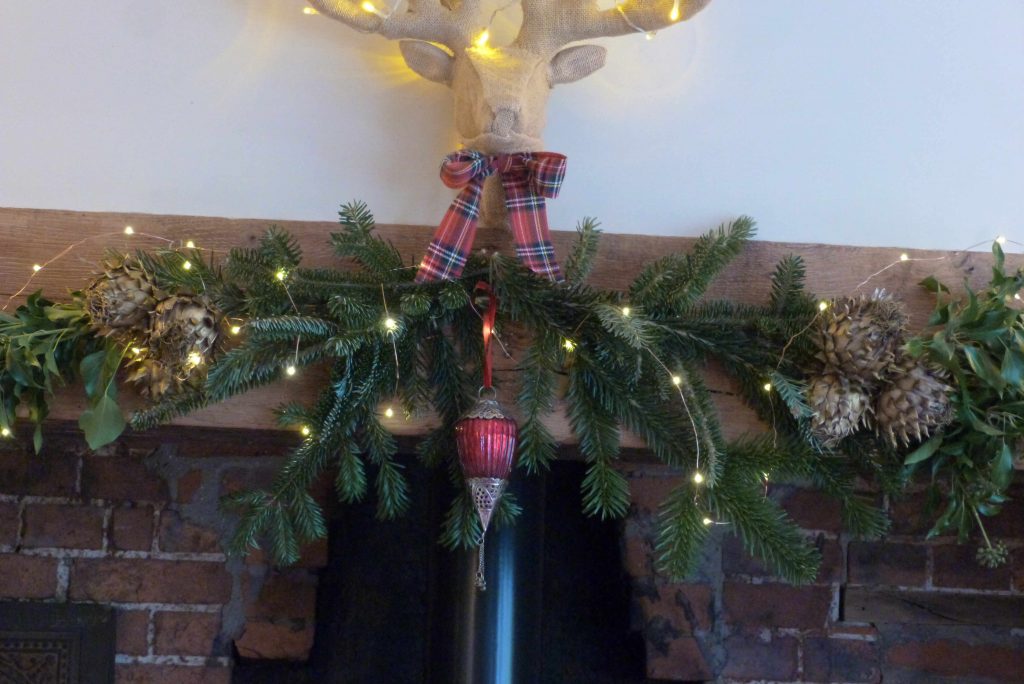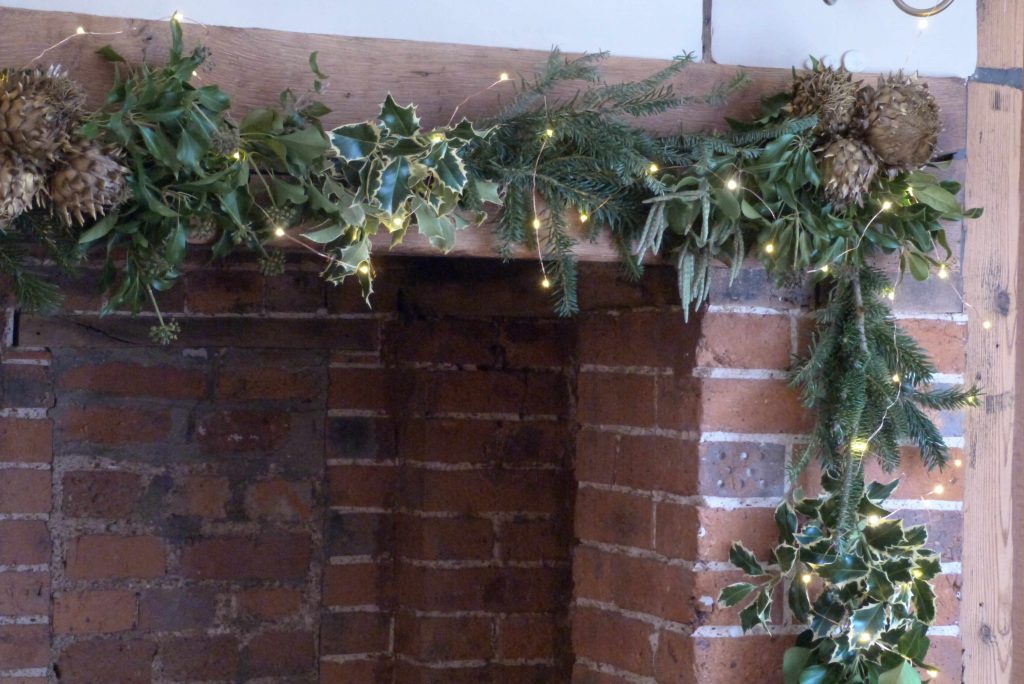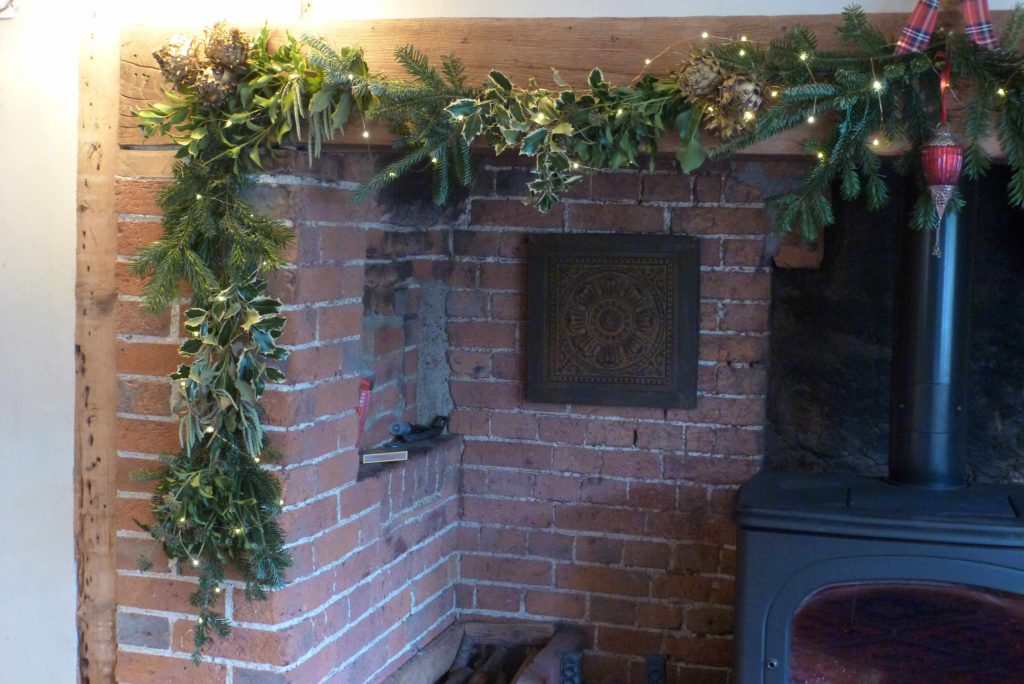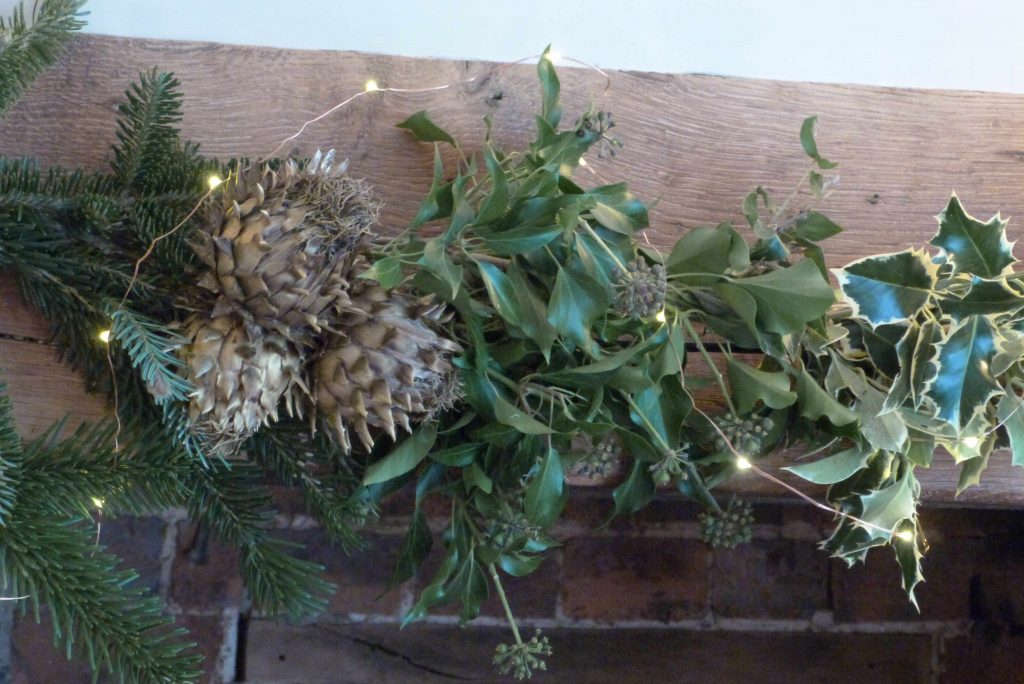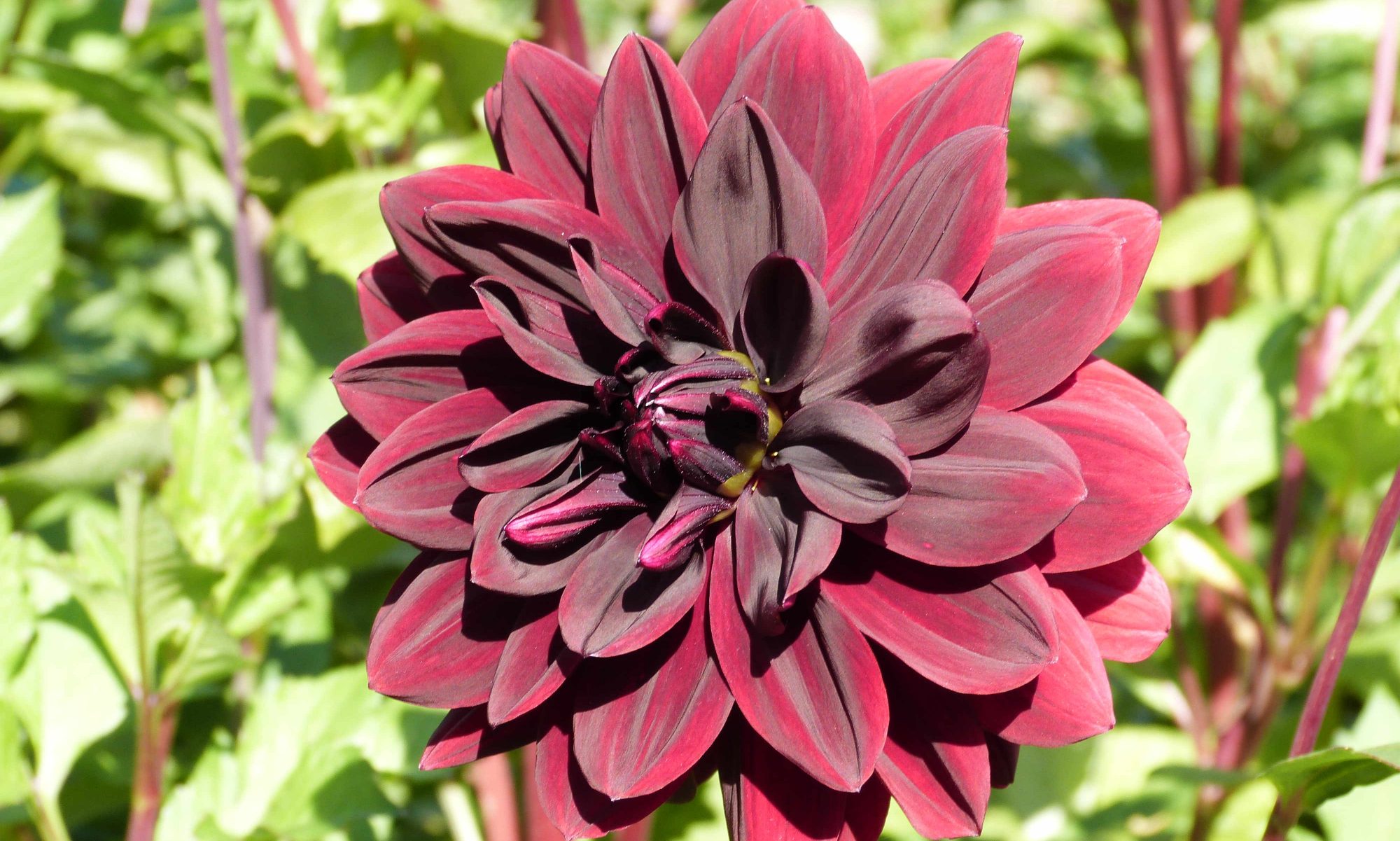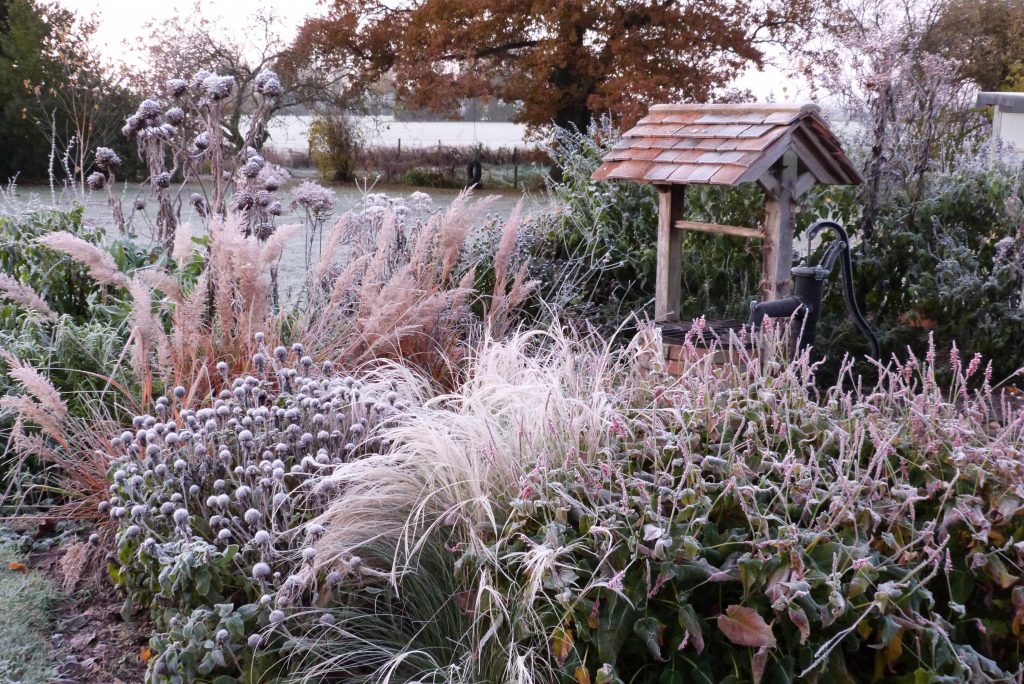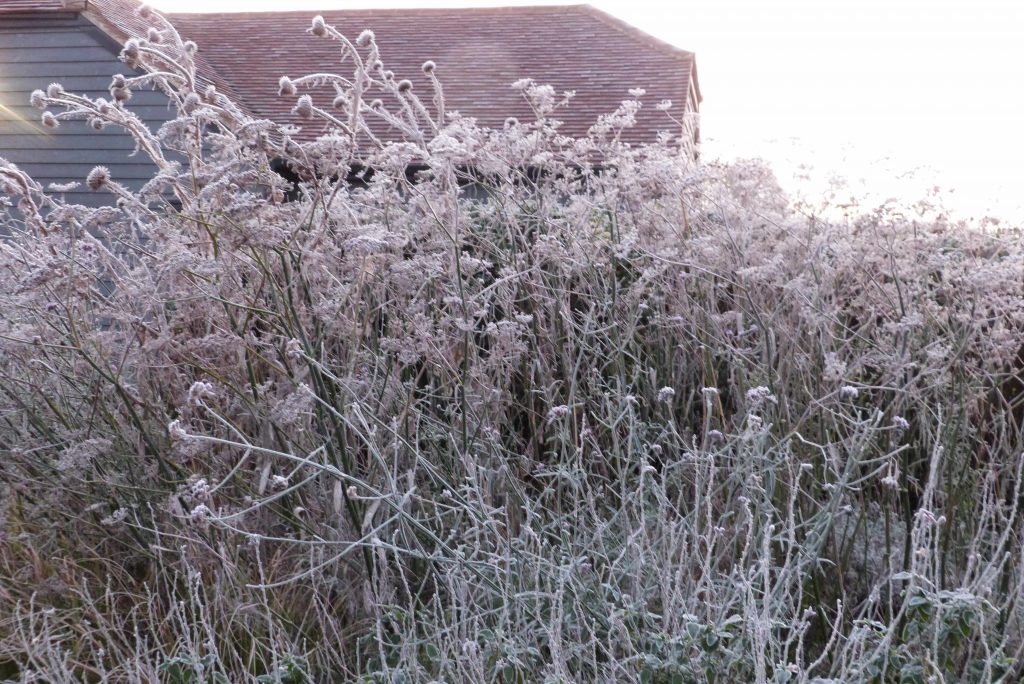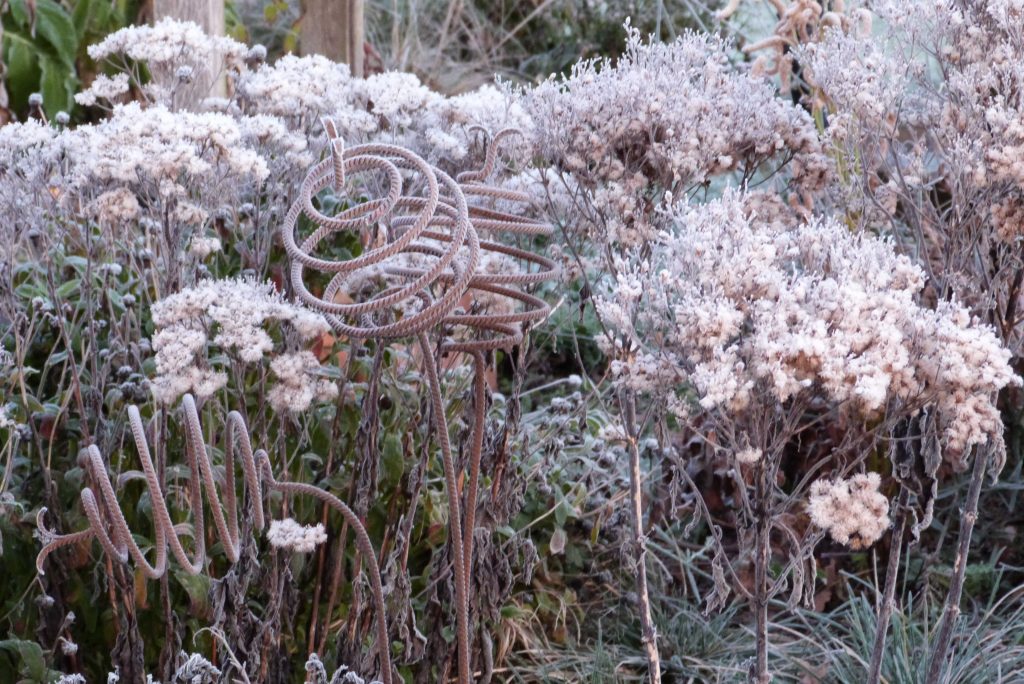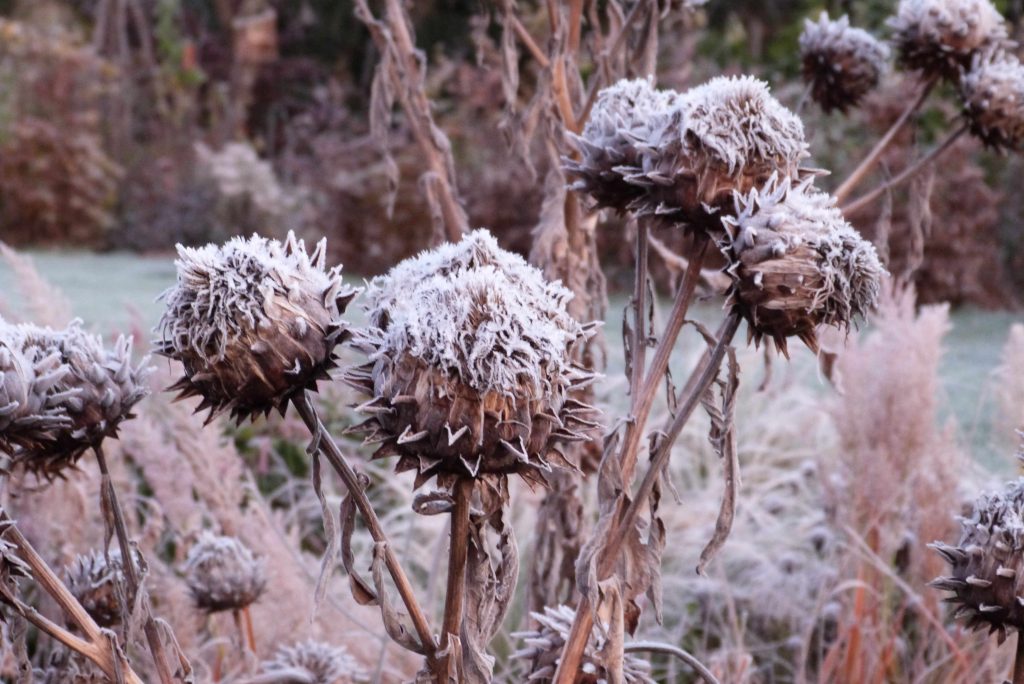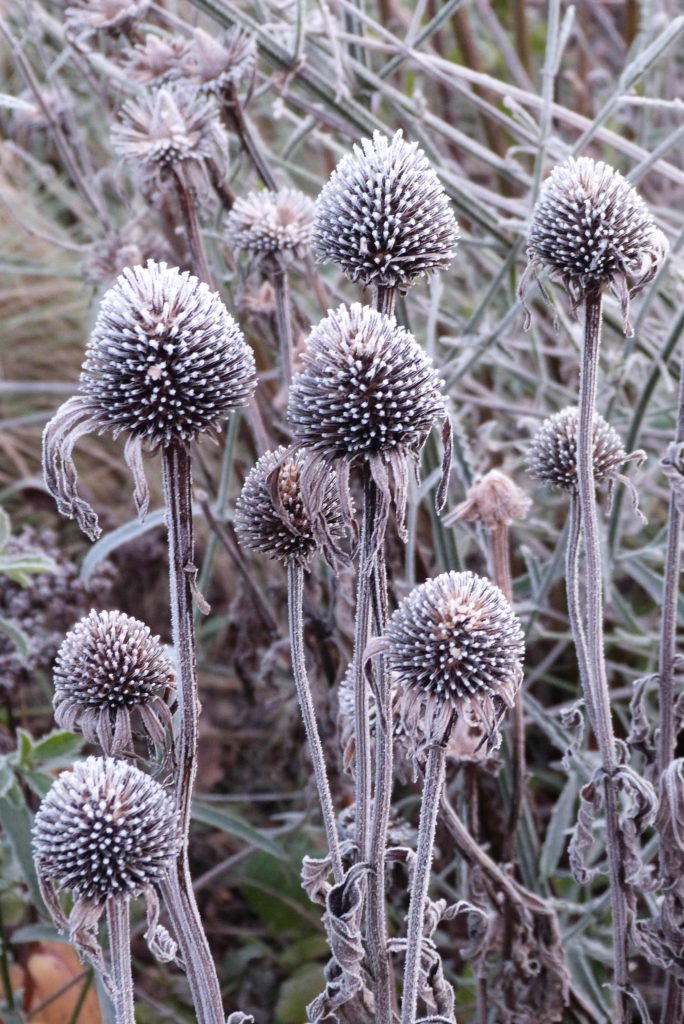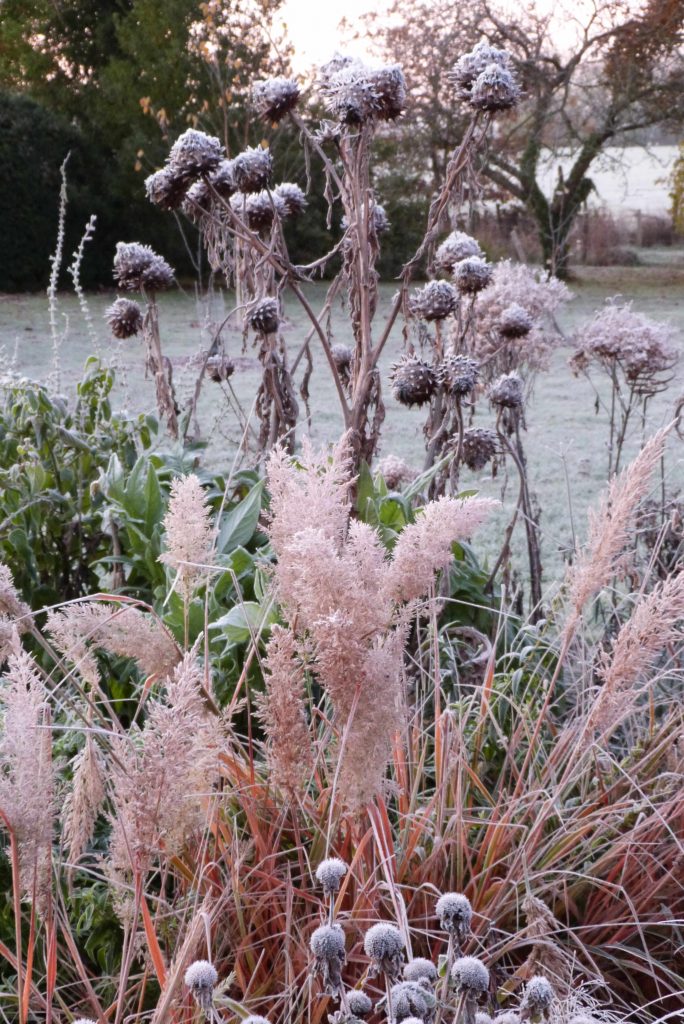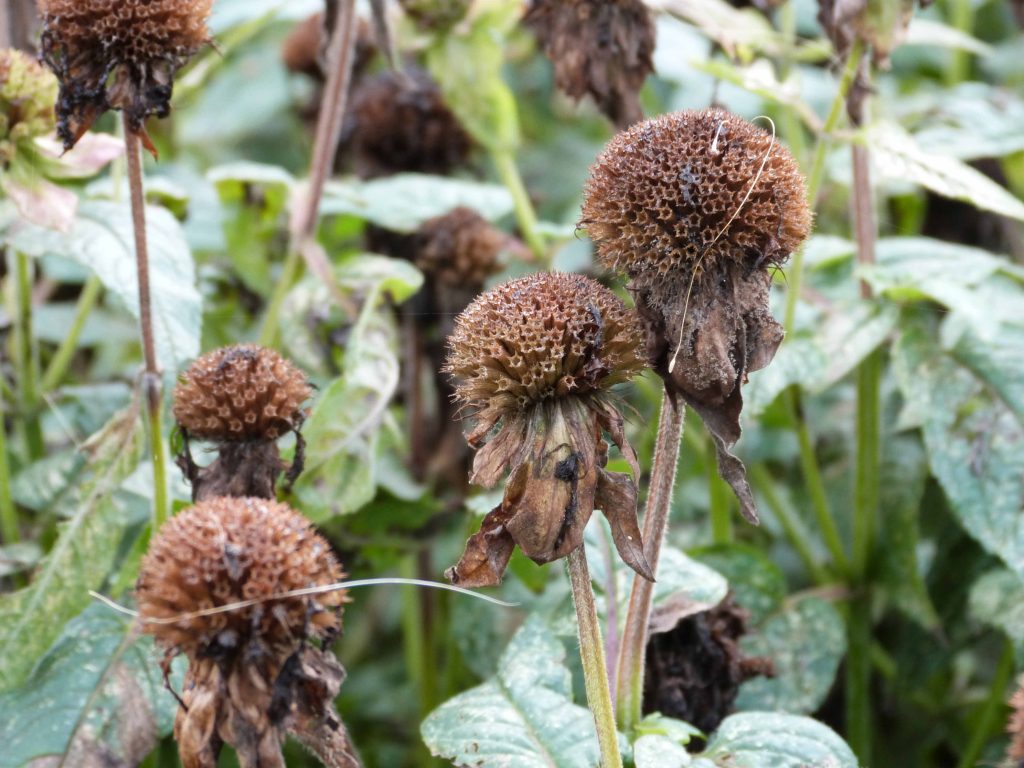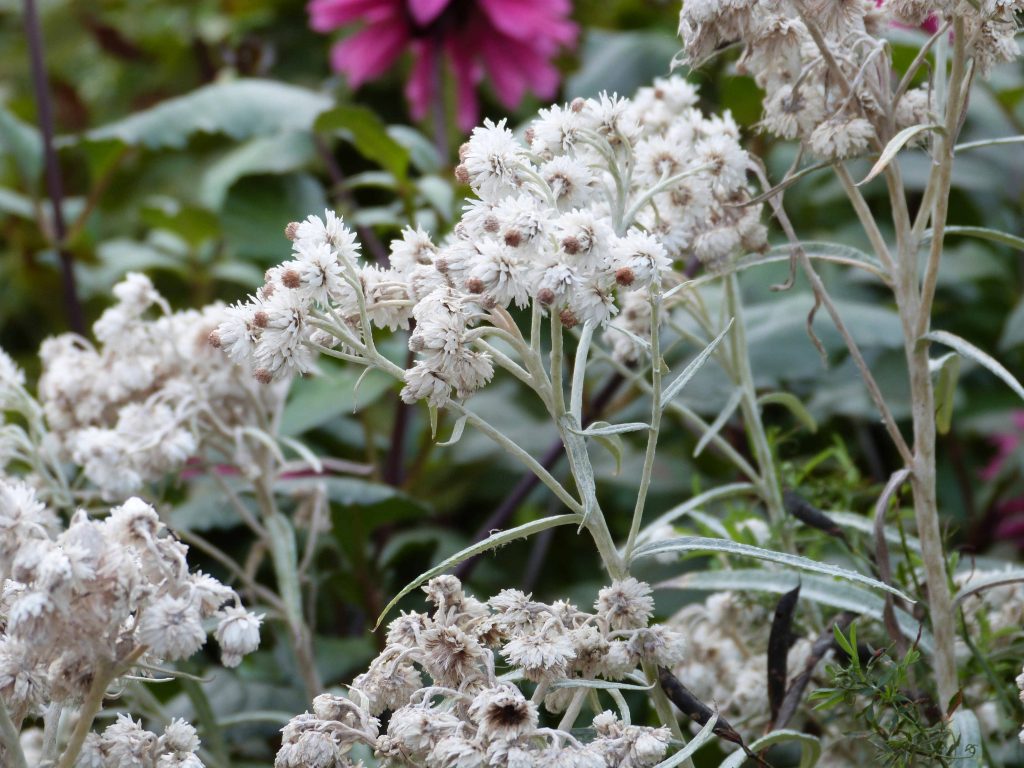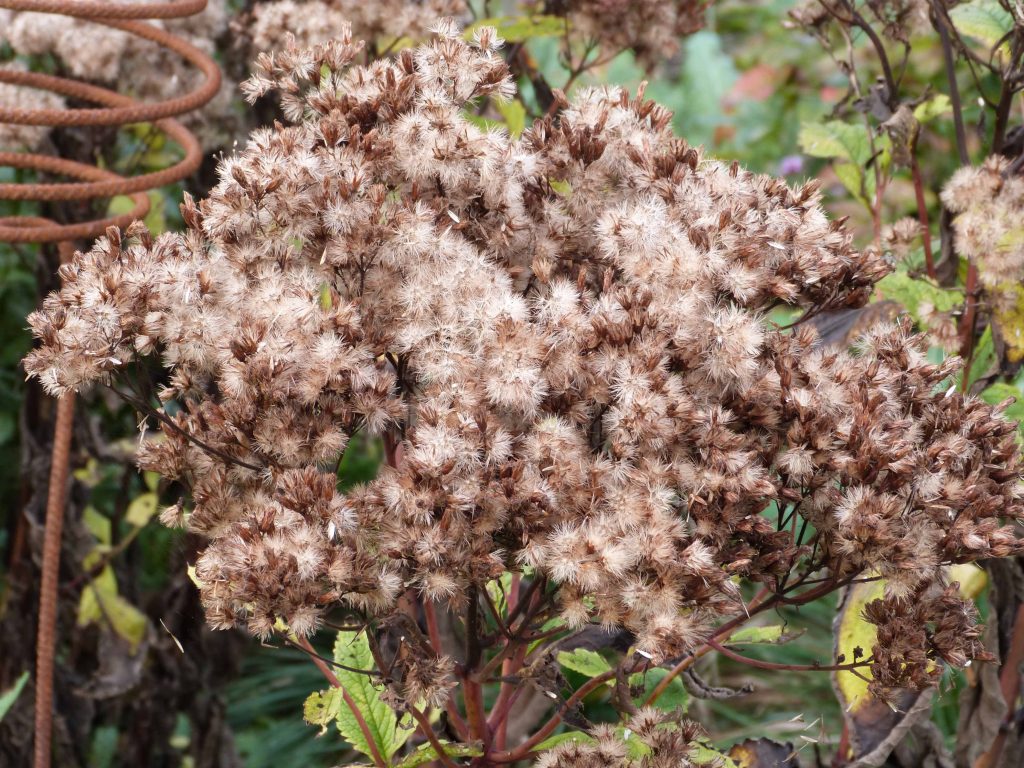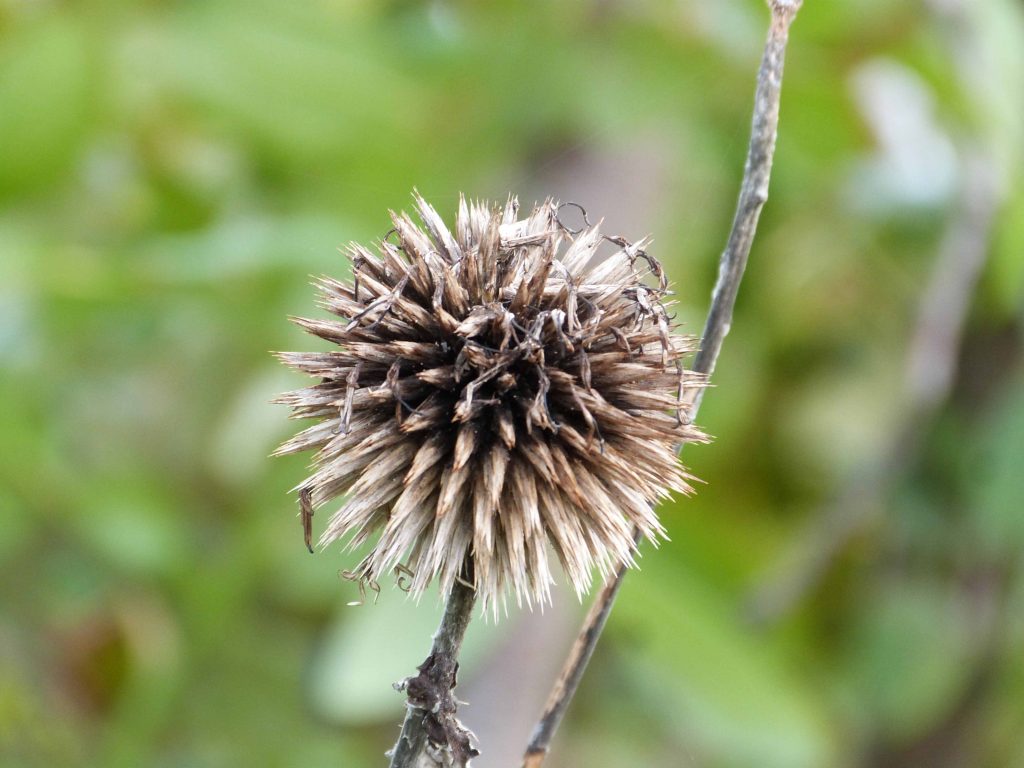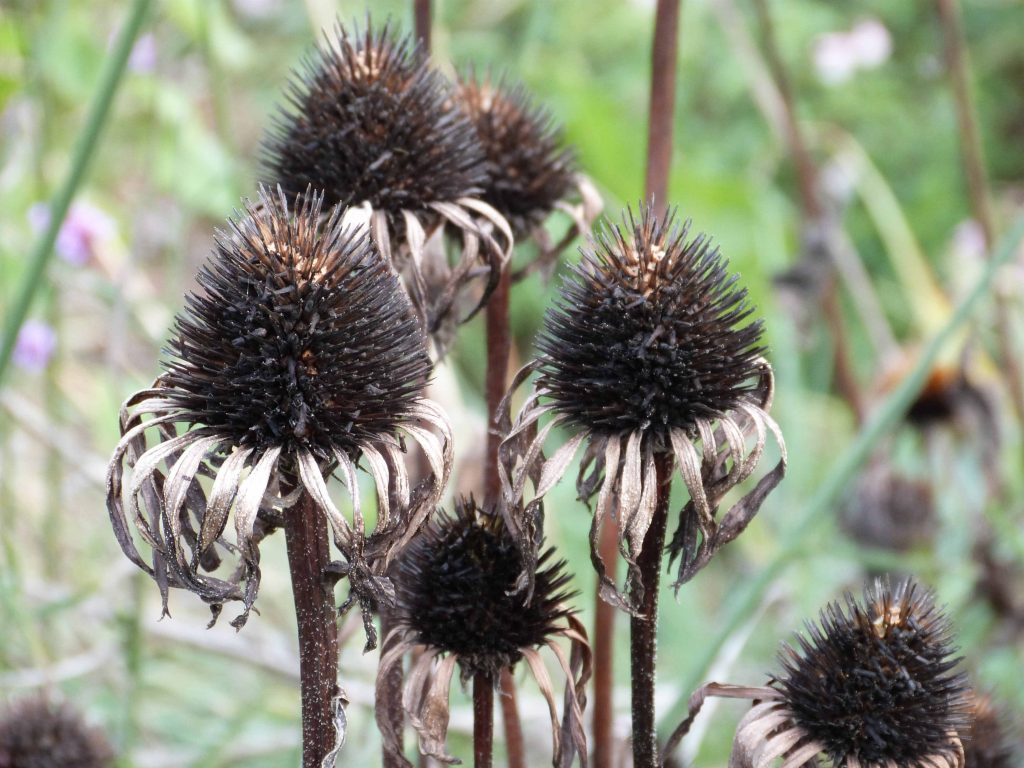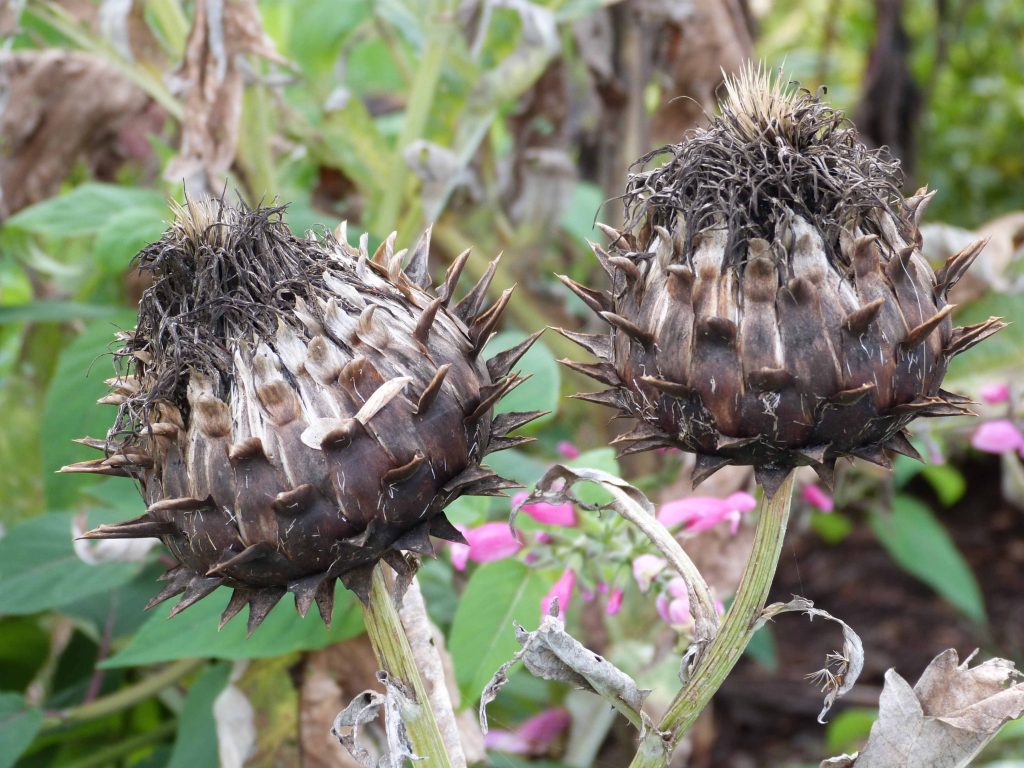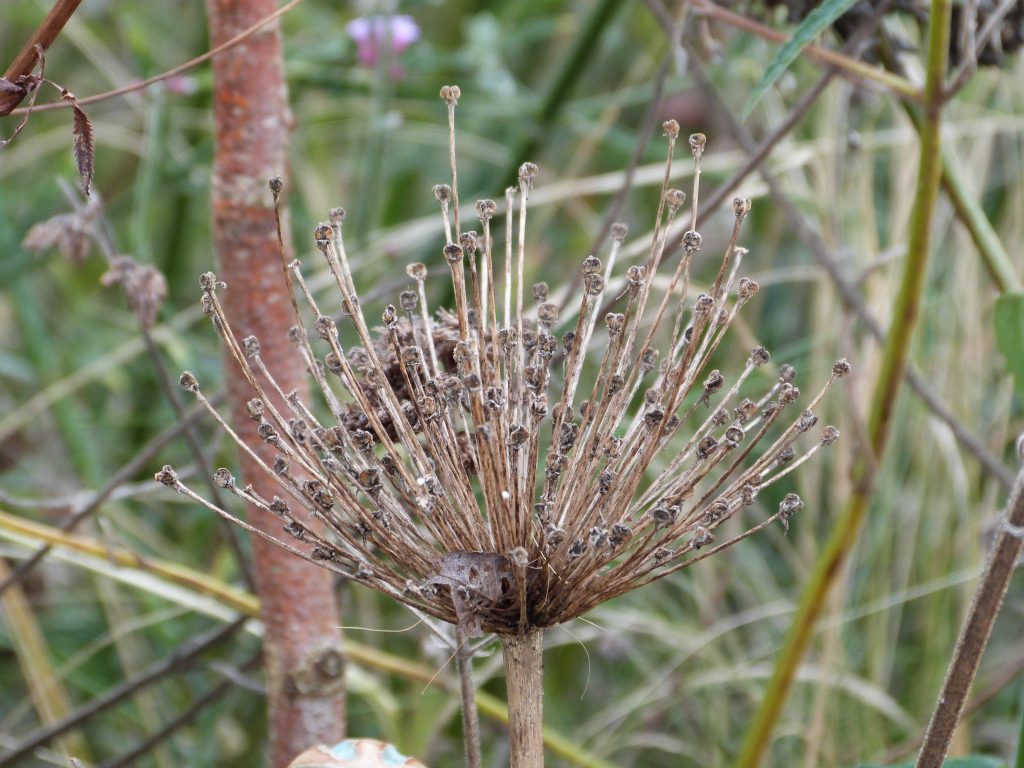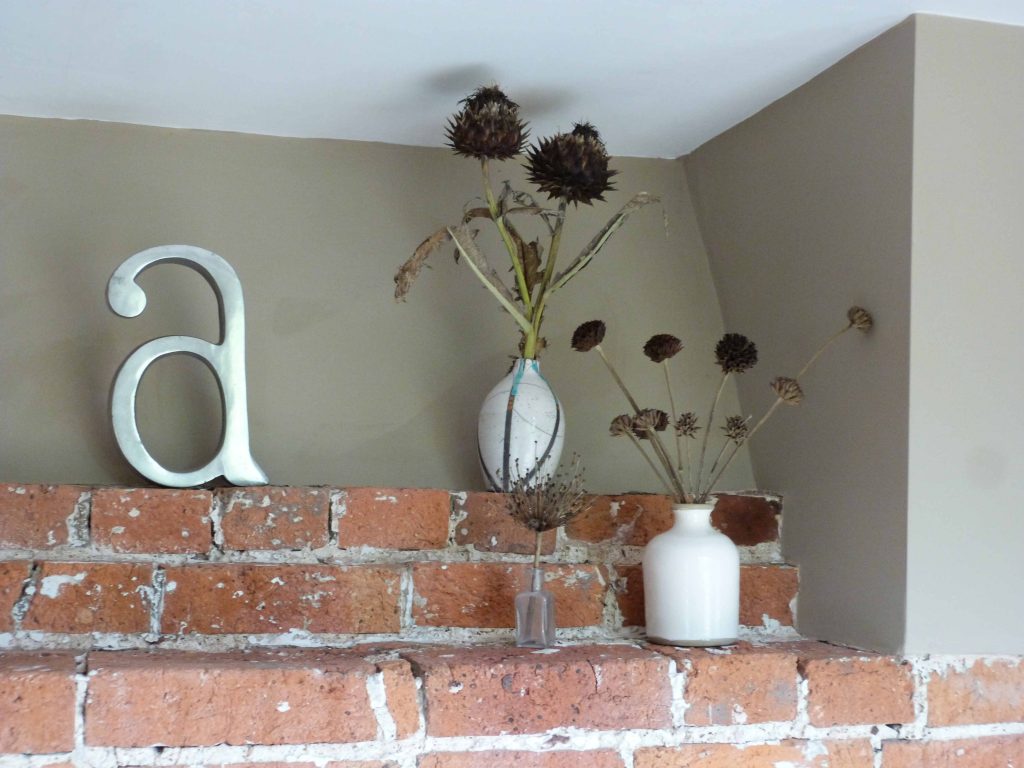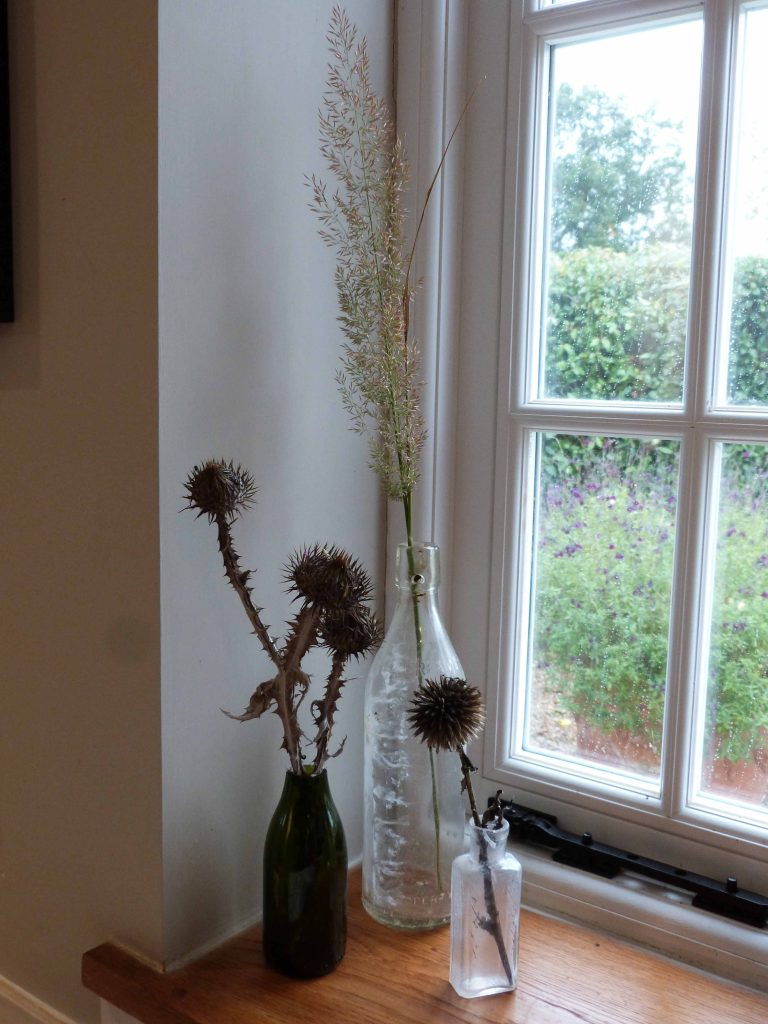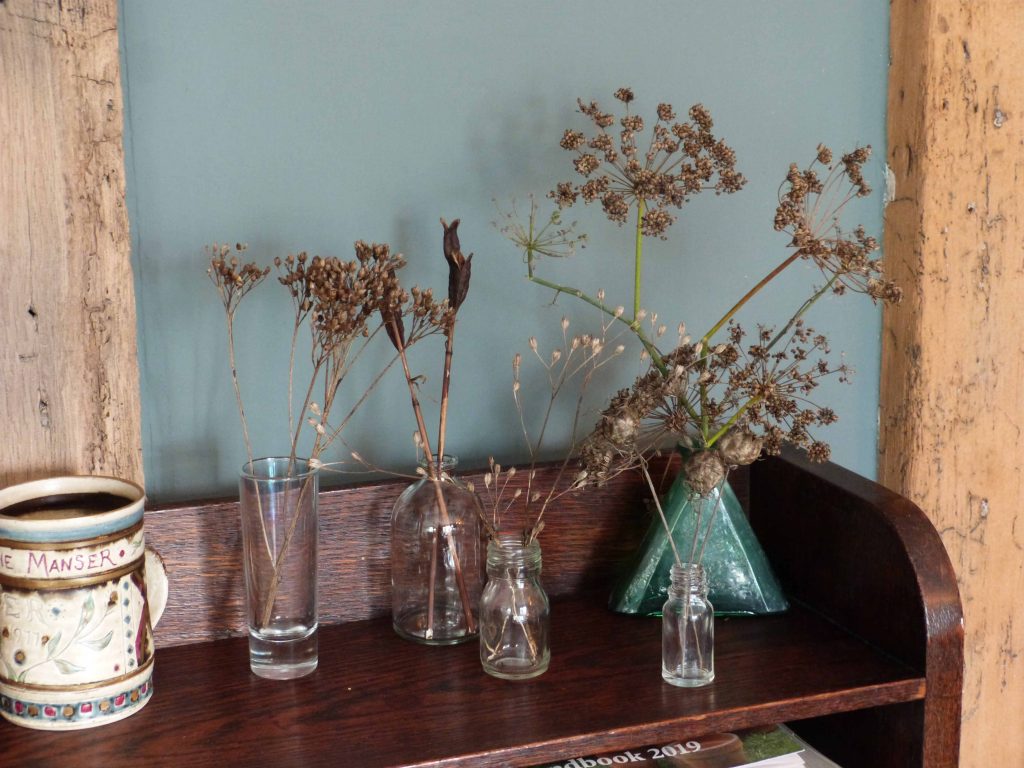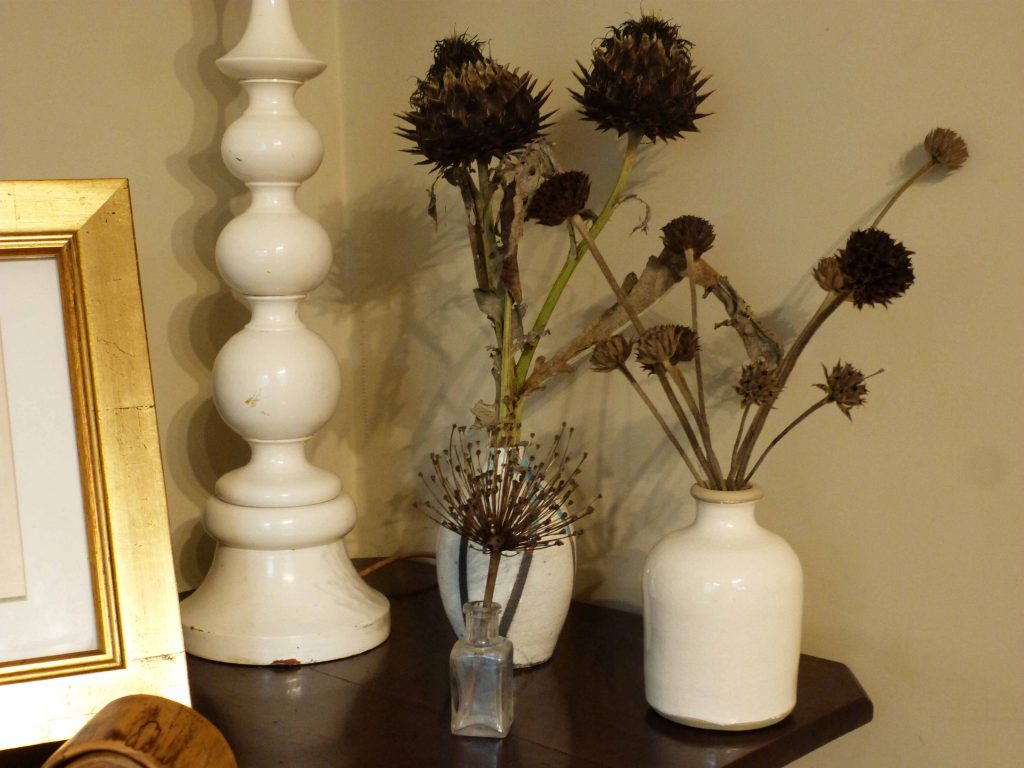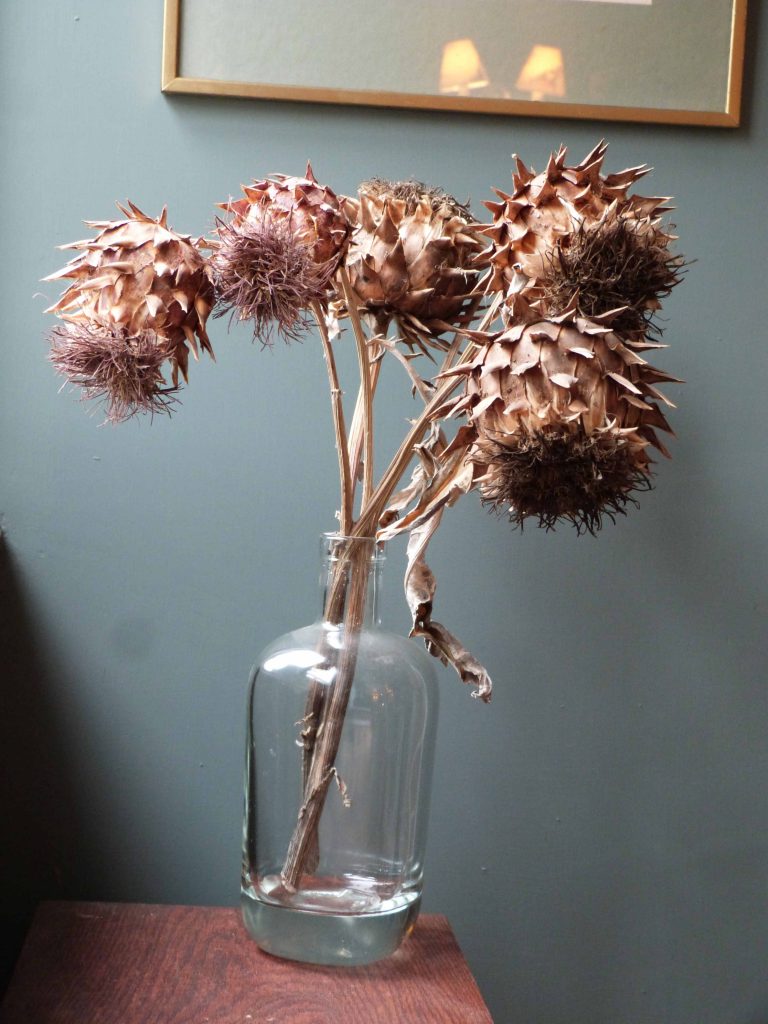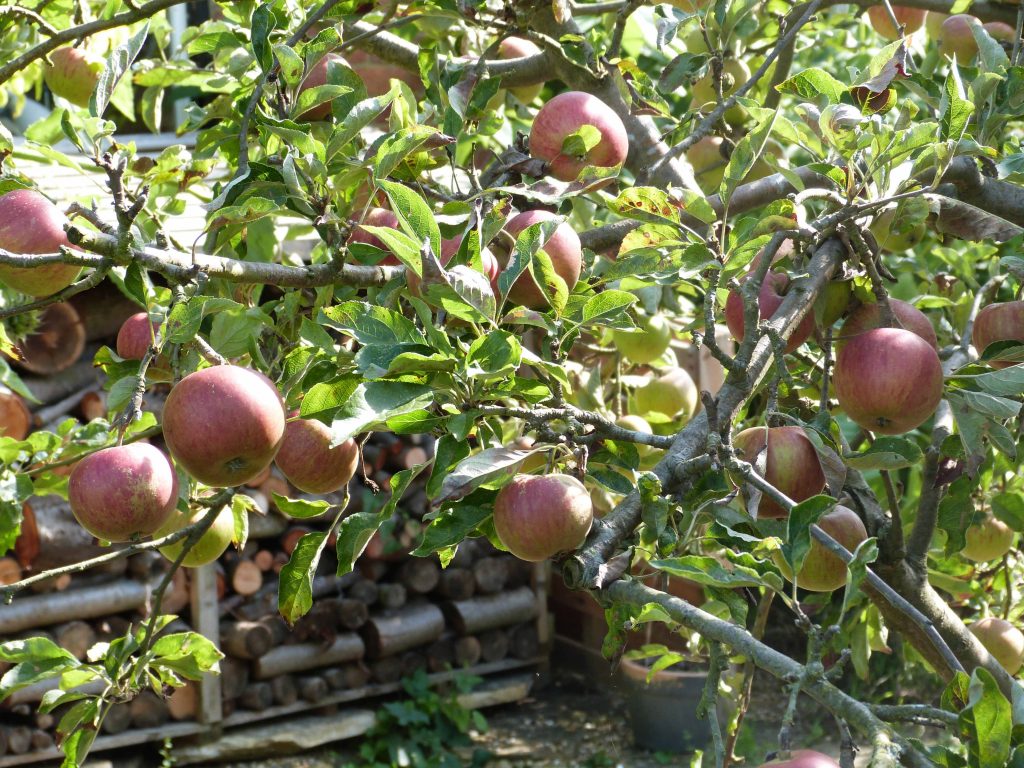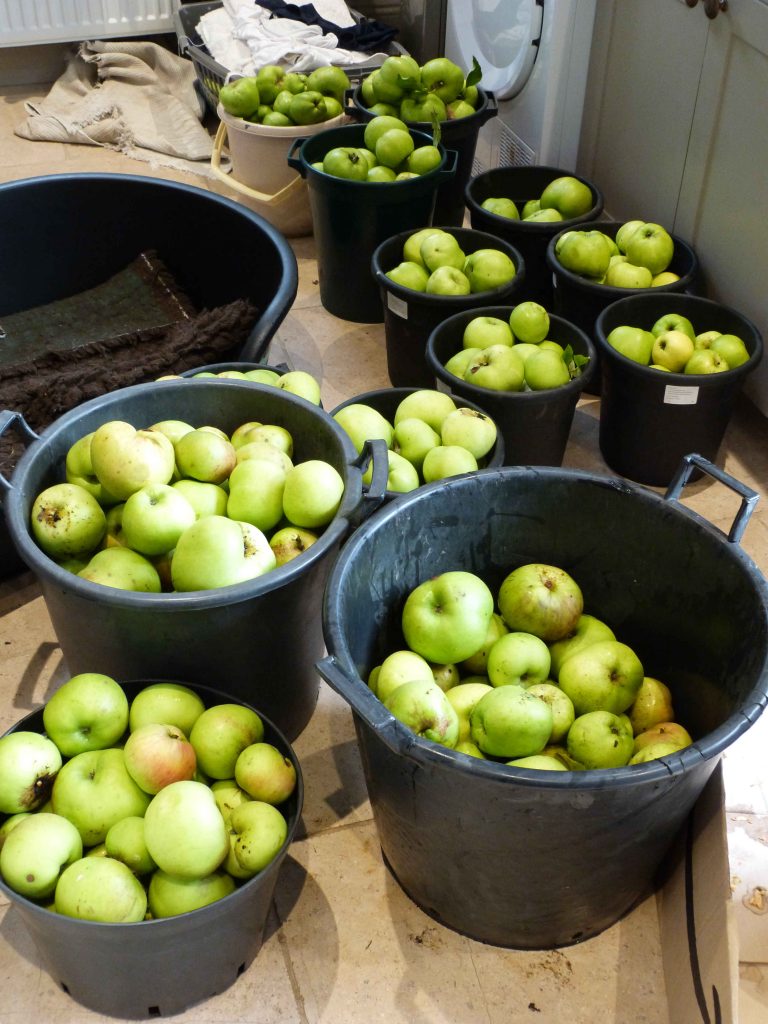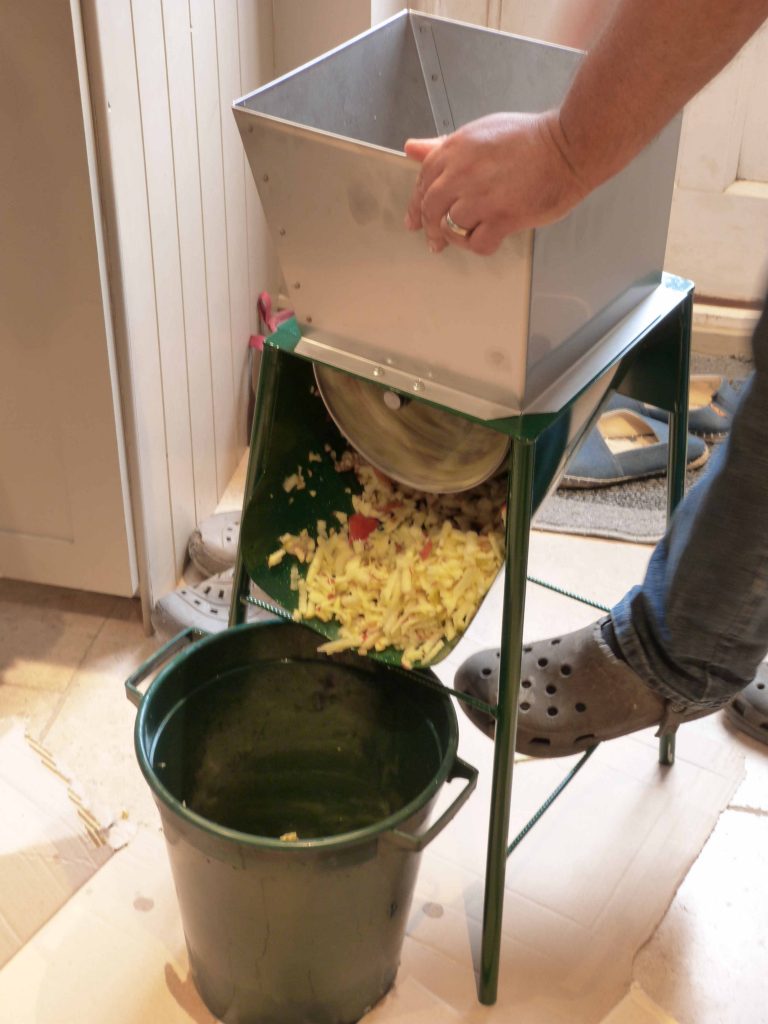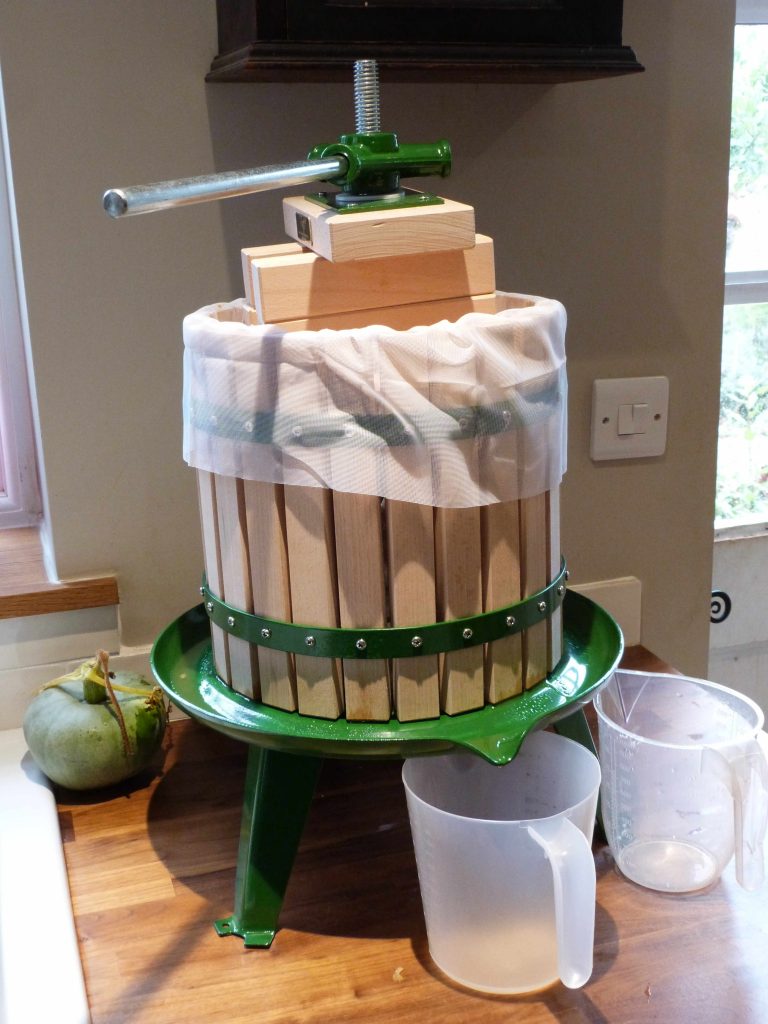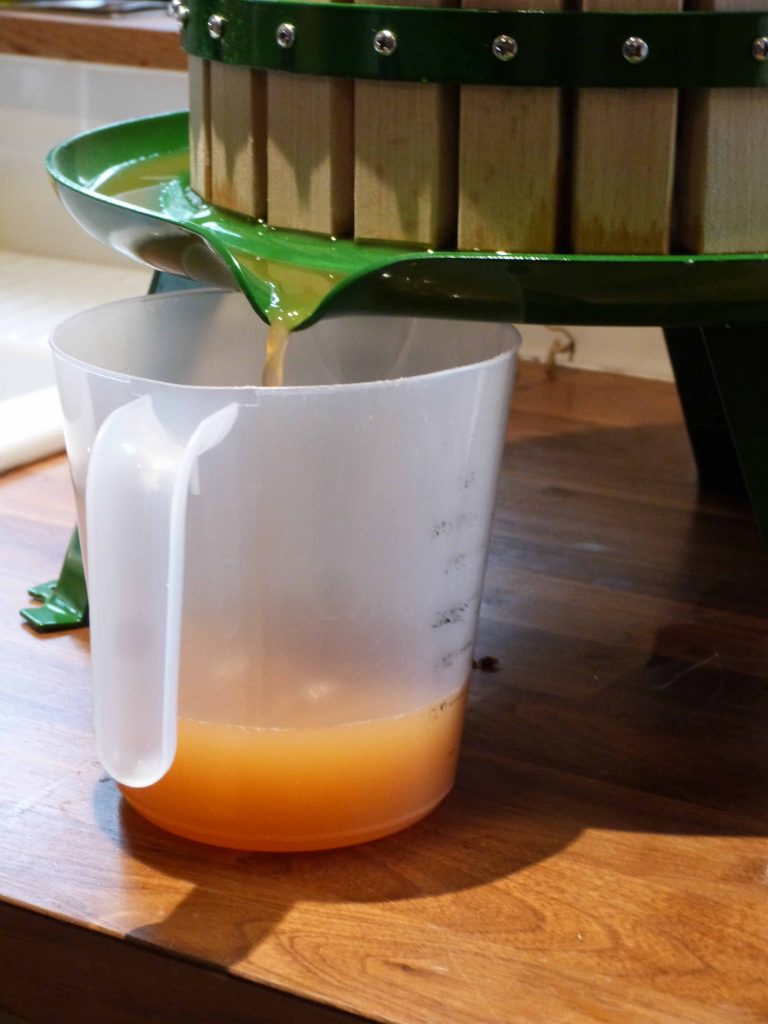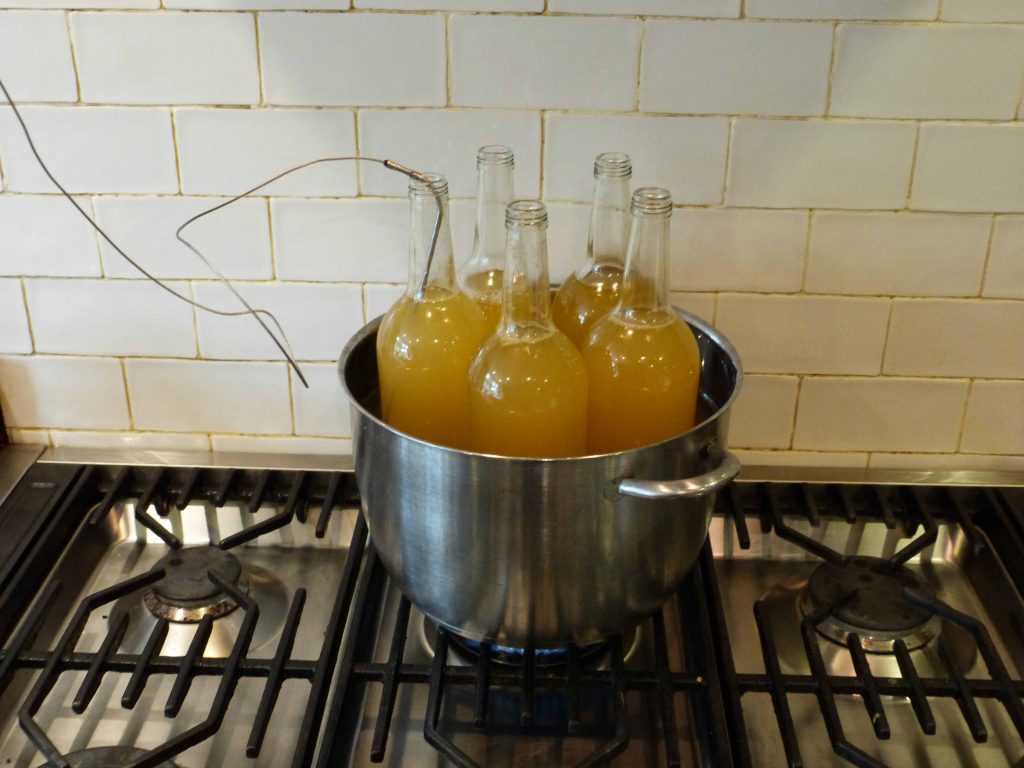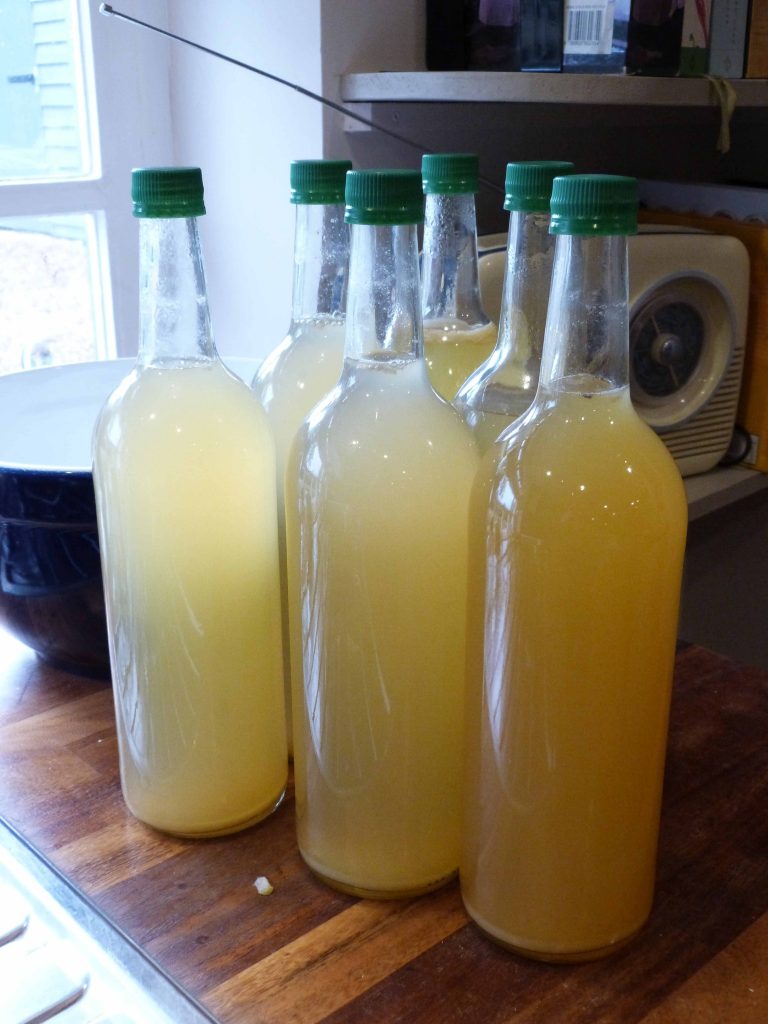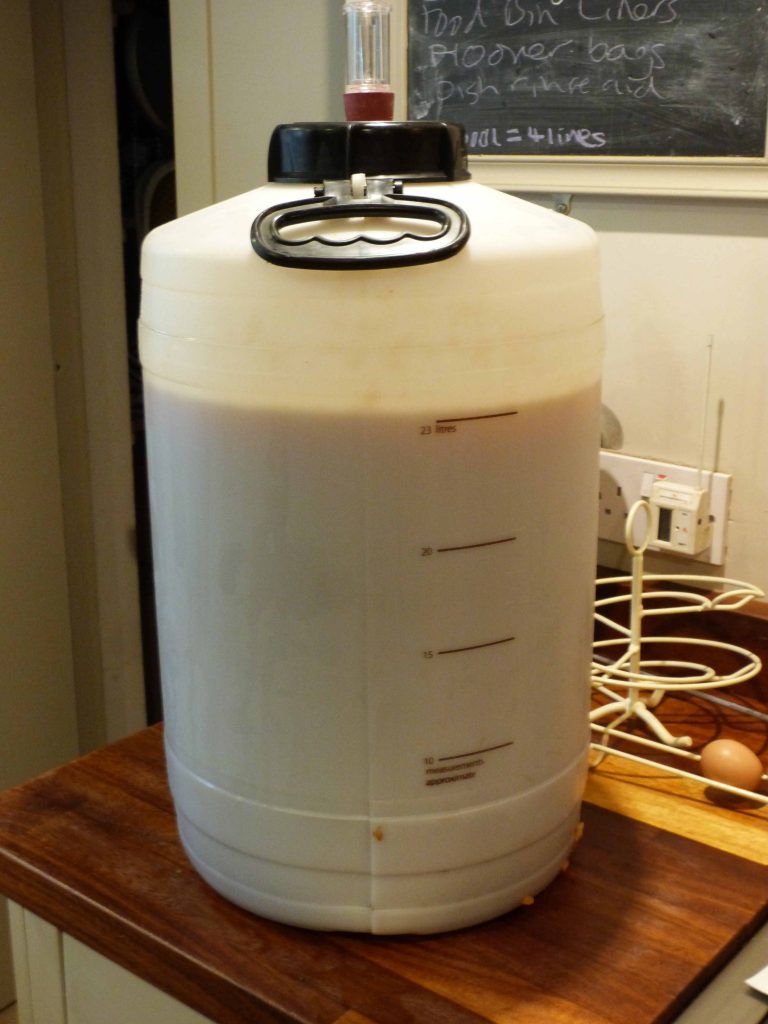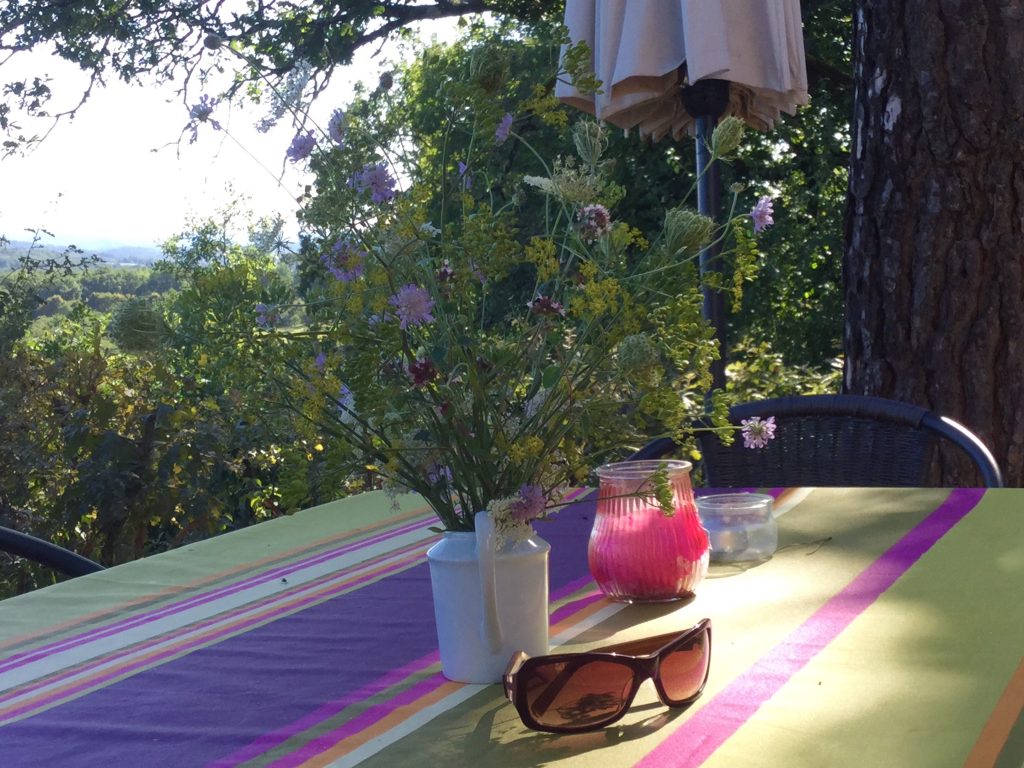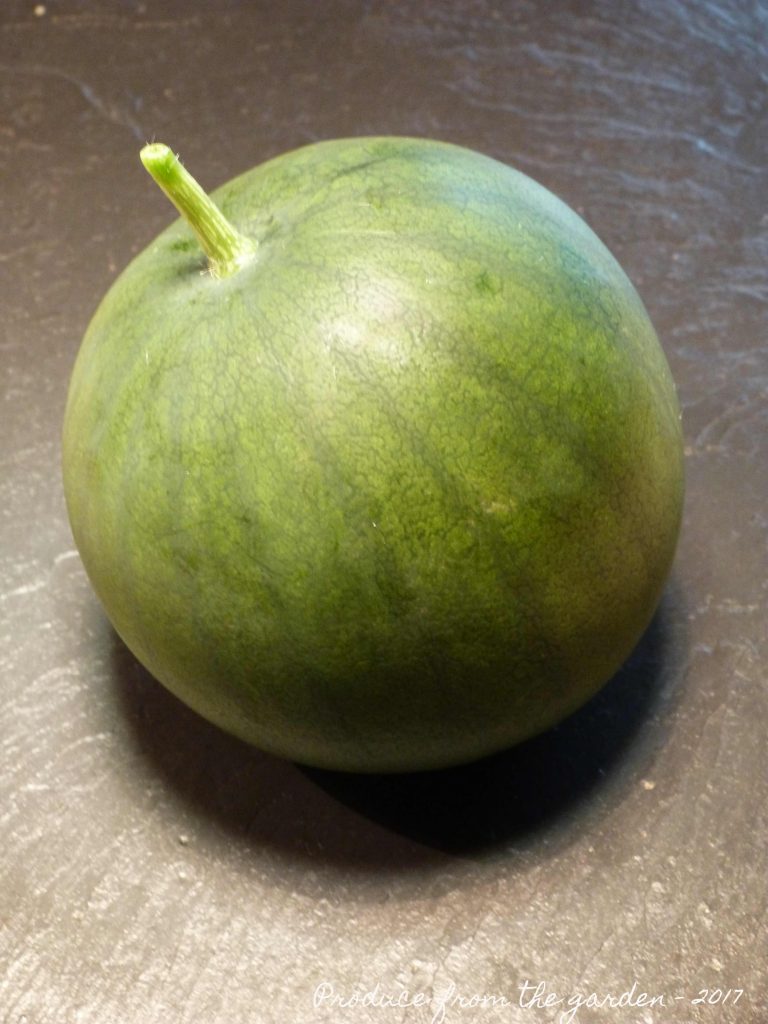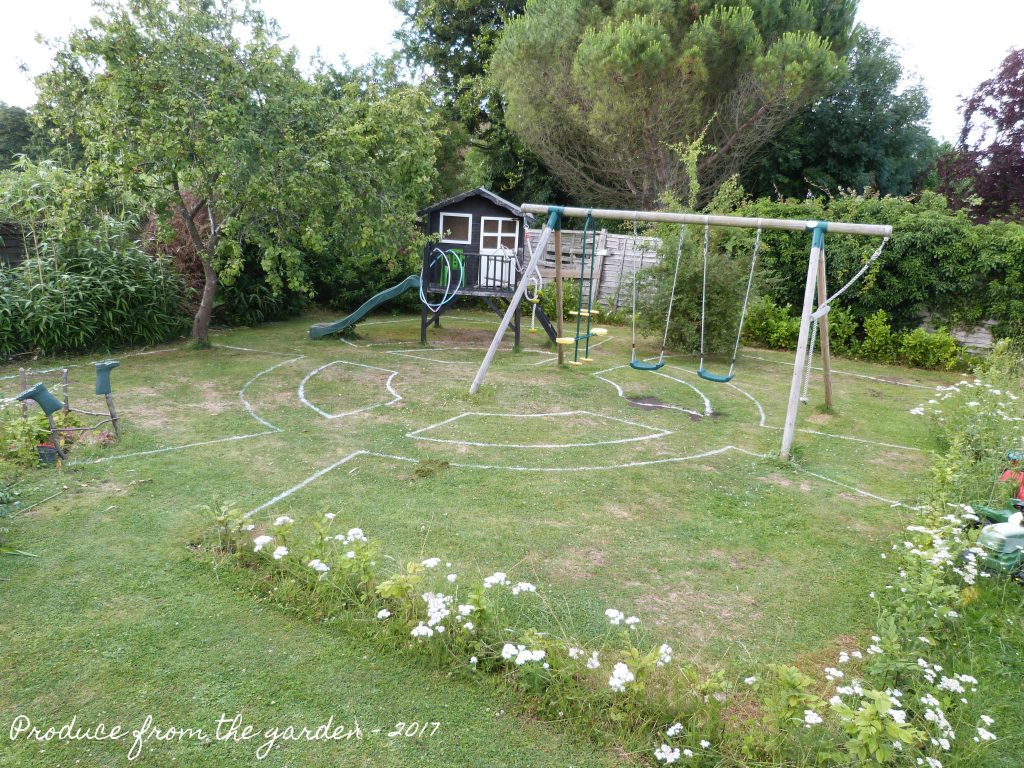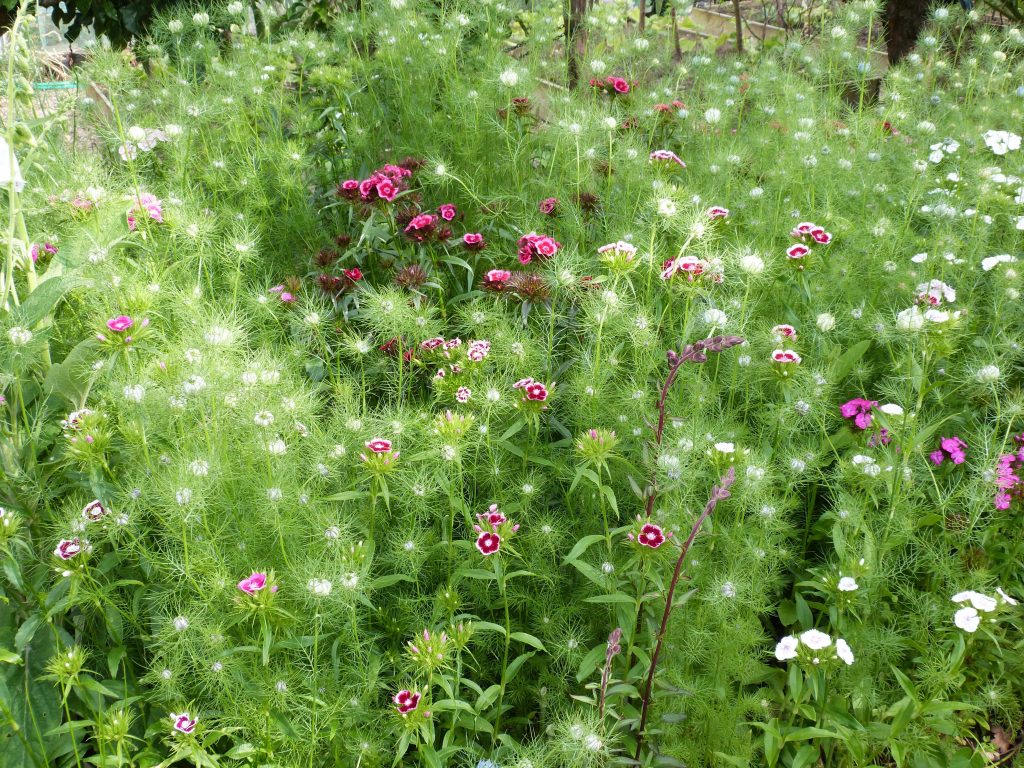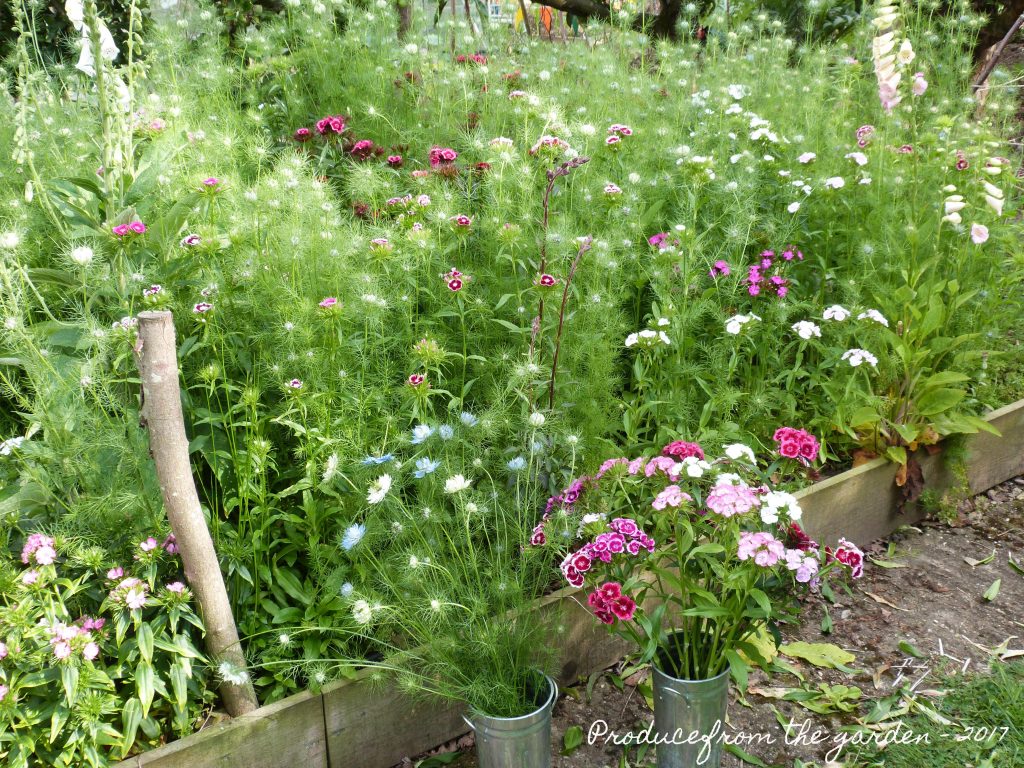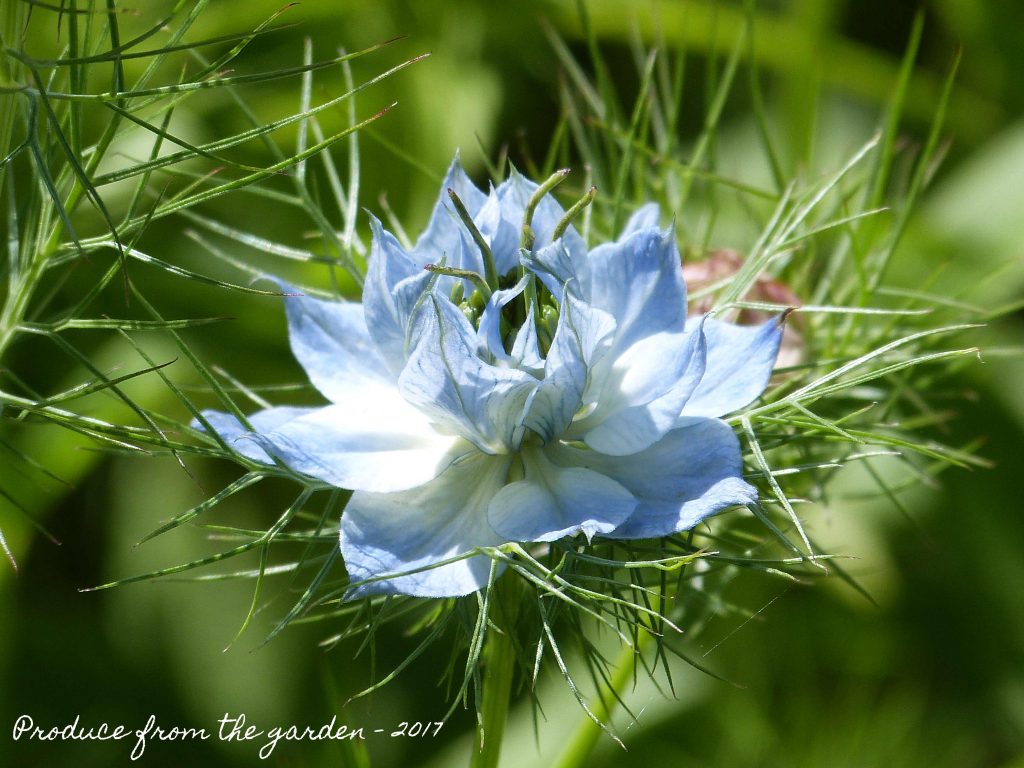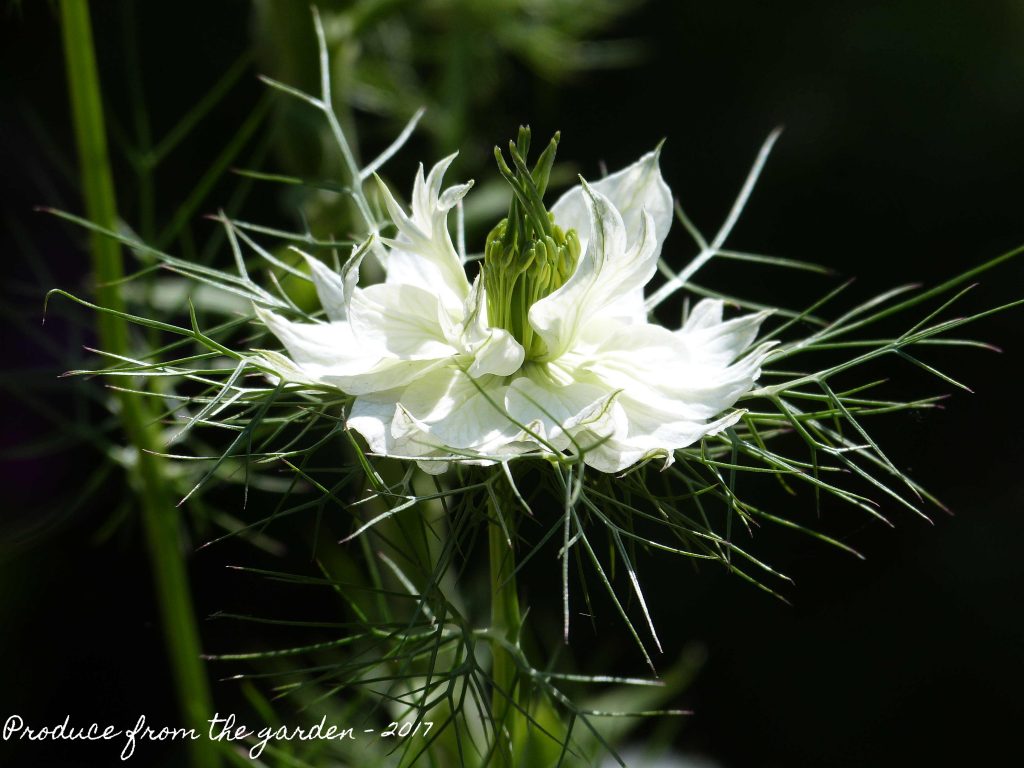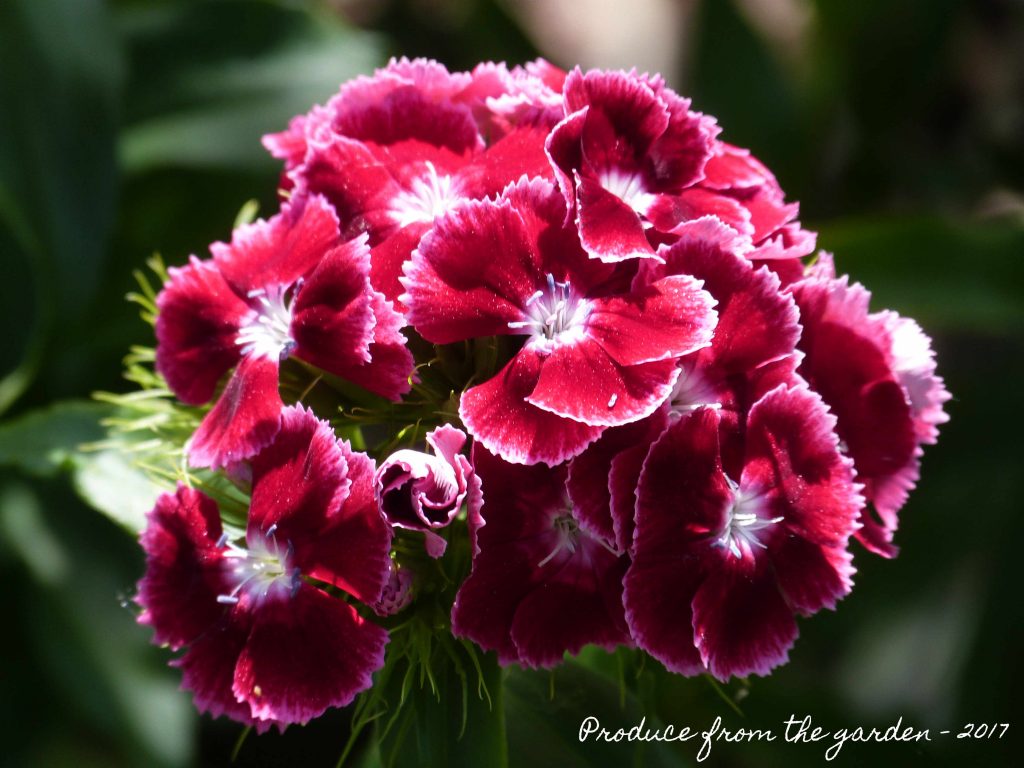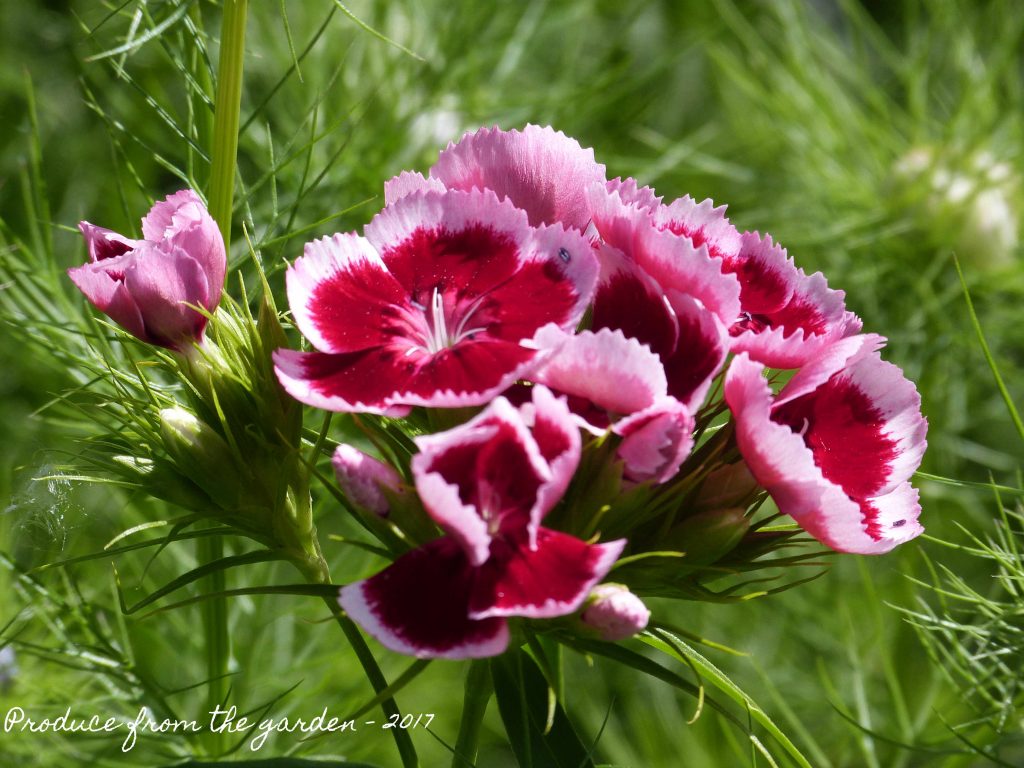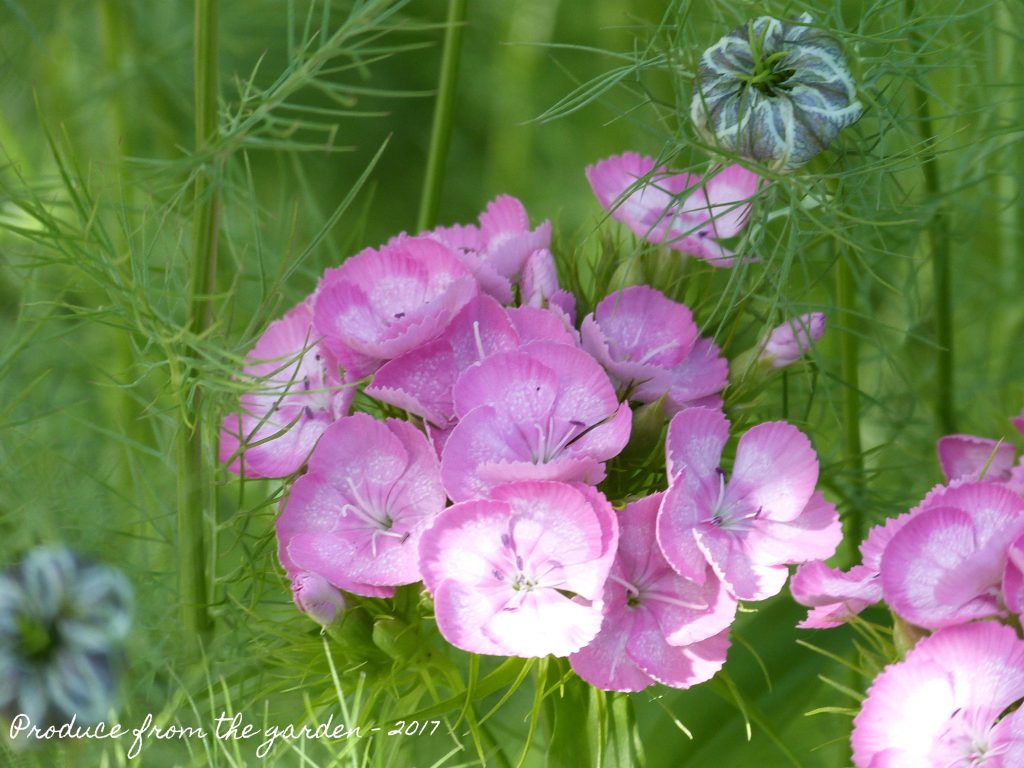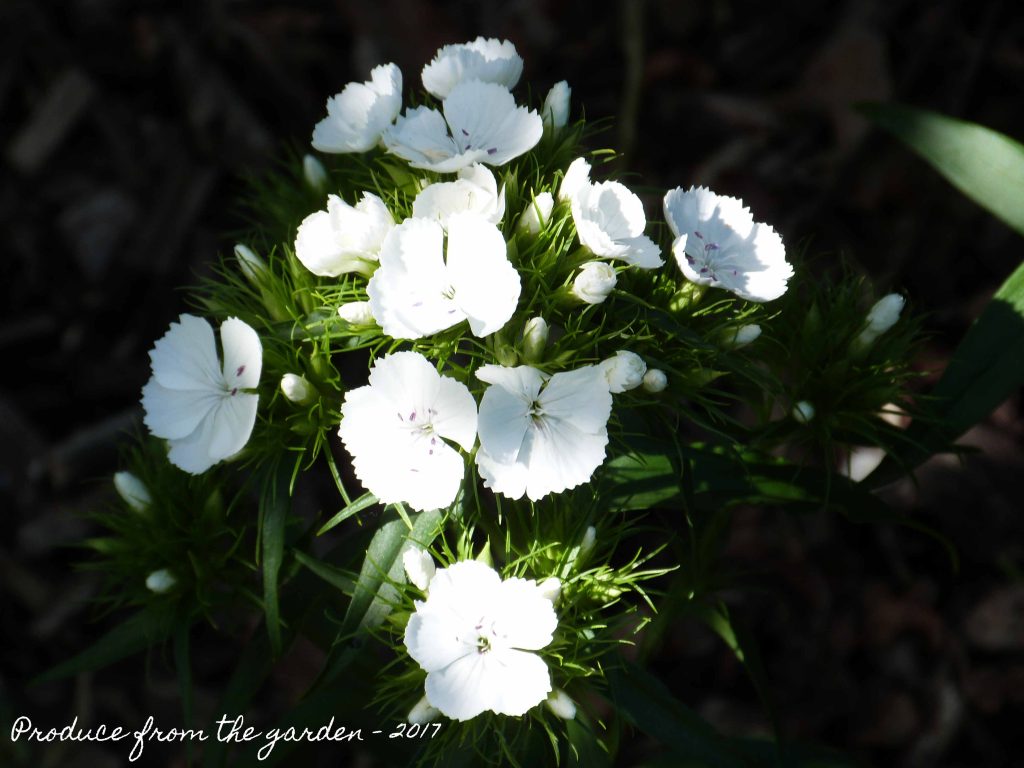
Christmas garlands are a fabulous way to decorate a fireplace or staircase and they’re much easier to make than you’d think. This fireplace garland took me two hours and that included the time spent in the garden picking the foliage.
Equipment needed:
- Foliage from the garden, evergreen glossy leaves last the longest. I used branches from non-drop Christmas tree, Ivy, holy, garrya and dried cardoon flower heads
- florist wire
- garden twine
- garden snips or secateurs
- fairy lights
- ribbon (optional)
- gold old Spray paint (optional)
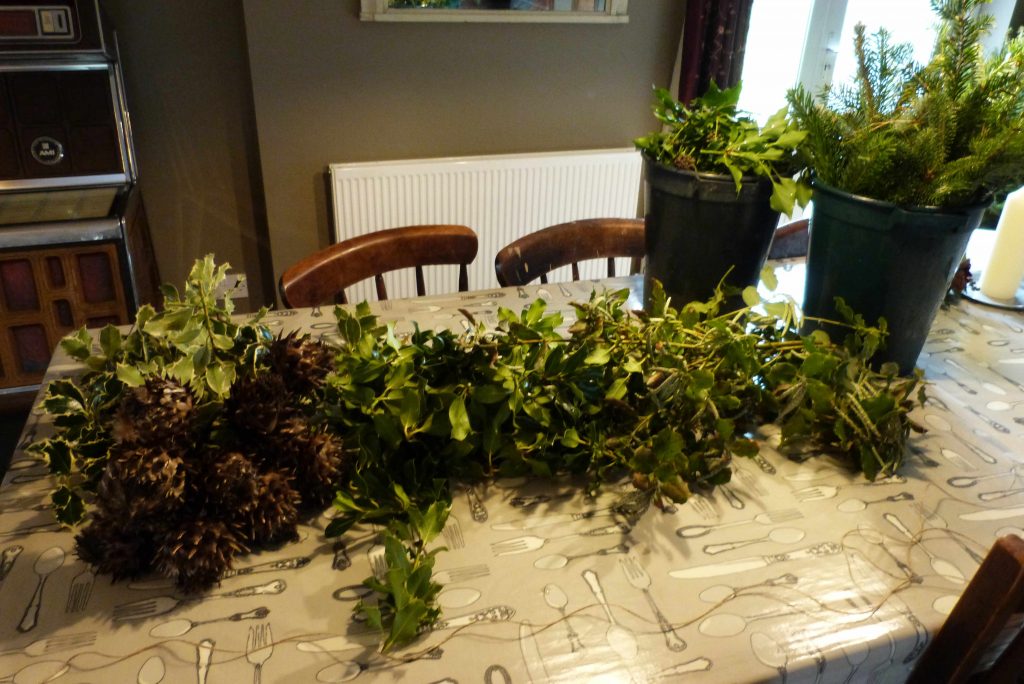
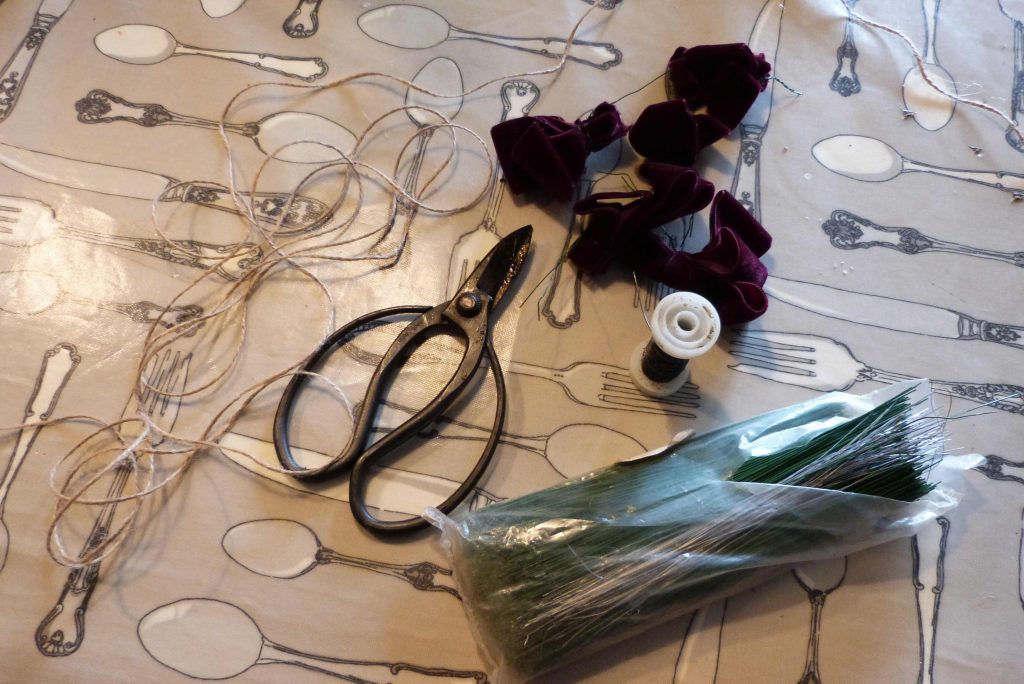
Measure the length of the garden twine to the length of garland you require. Bunch three or so stems of one type of foliage together, tie stems firmly with wire to secure in place. Then wire to the start of the garden twine.
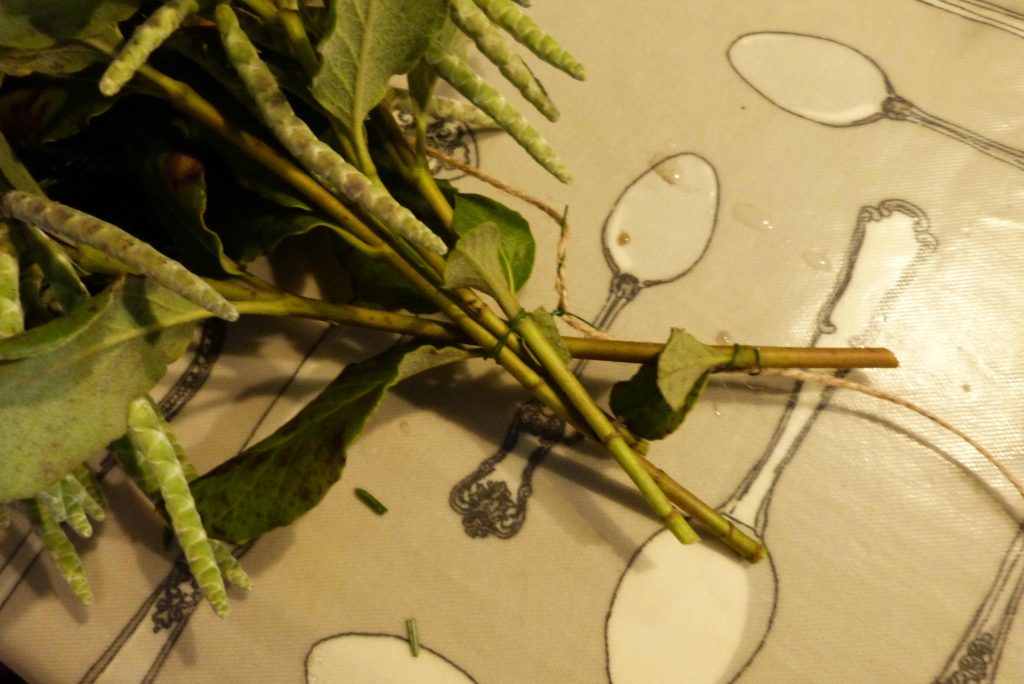
Take the next wired bunch of foliage and wire it to the twine so that it just covers the stems and wires of the previous bunch, and repeat.
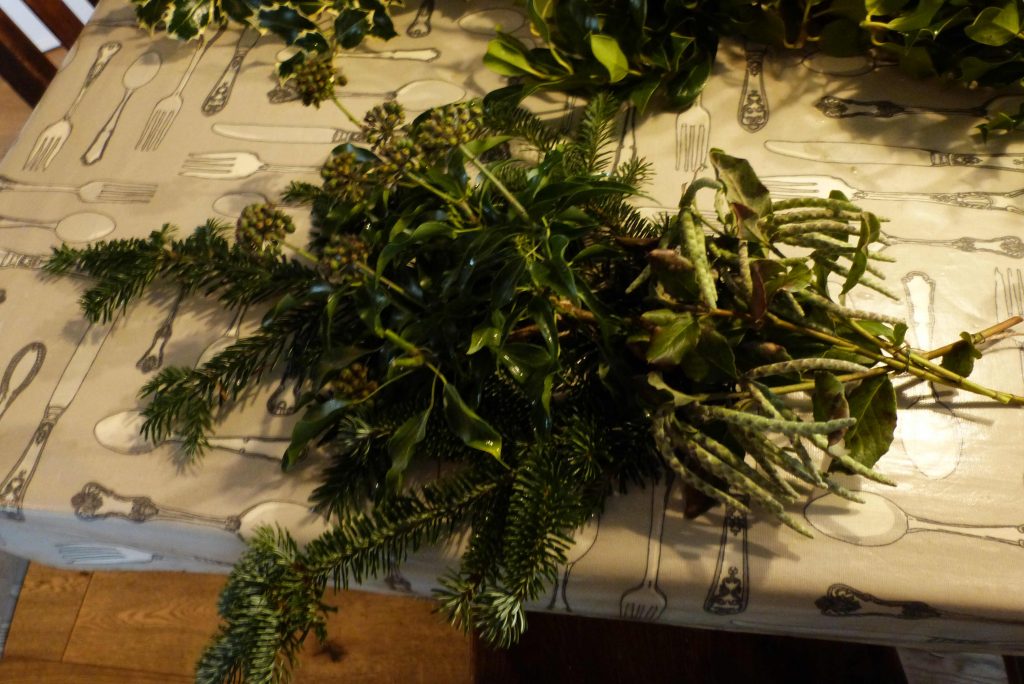
Once I had a length for the first section of my garland I decided to secure the twine into place, with nails in the top two corners and in the centre. If you decide to continue working on a table and it’s for a fireplace make sure you’ve marked the middle point on the twine as once you get to the centre the foliage needs to be tied in the opposite direction.

Continue to tie in the bunches of foliage with the garland in situ.
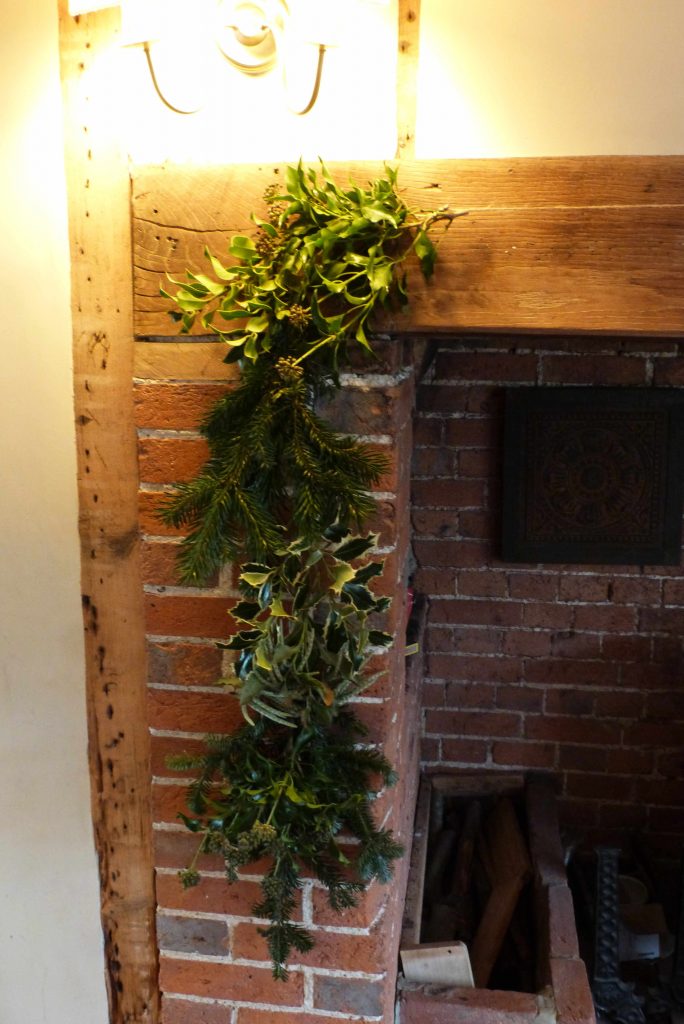
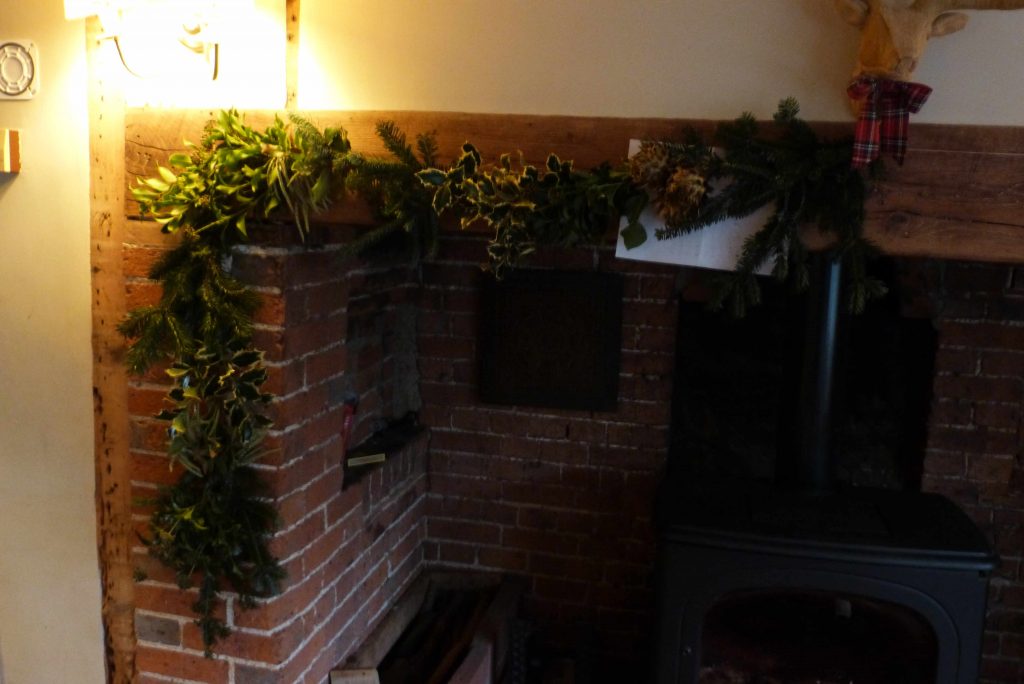
In the centre I chose a single stem of christmas tree to splay across and then directioned another single stem of christmas tree to mirror on the other side. I continued the garland attaching foliage in the same order as the first side, to mirror and keep the garland balanced. Once the main garland was completed I added extra gold sprayed cardoon heads, a central Christmas bauble, battery powered (I have no power point near the fireplace) fairy lights on a bronze coloured wire. You can add extras like ribbon bows if you like.

